47 Activities in 47 Prefectures to Add to Your Japan Bucket List
A typical Japan bucket list includes visiting Tokyo, Kyoto, Osaka, and maybe a quick trip into the countryside. These itineraries are marketed as the ultimate Japan guide.
While those are all great places to visit, there is so much more of Japan to be explored. Japan is one of the most interesting countries in the world—more than just the land of bullet trains, delicious seafood, and golden temples.
There are 47 prefectures, and every prefecture has its own signature dish and iconic landmark to add to your Japan bucket list. While teaching English in Japan for one year, I visited every prefecture by staying in hostels and utilizing rail passes. I never rented a car once! Also, I did this all on my own, and I loved it.
I know most travelers do not have the time to visit every prefecture, but I hope this travel guide adds more hidden gems to your Japan bucket list.

Hi. I am Noah Takes The World. I traveled solo to every prefecture in Japan, and now I want to help you do the same. Solo traveling is freeing, and it does not have to be expensive.
Subscribe to my monthly newsletter—stunning photos and stories to guide your solo trip
This post may have affiliate links. I receive a small percentage if you book a hostel or attraction through my recommended links. This is at no extra cost to you and helps me reach my goal of becoming a full-time digital nomad.







Is It Safe to Travel to Japan Alone?
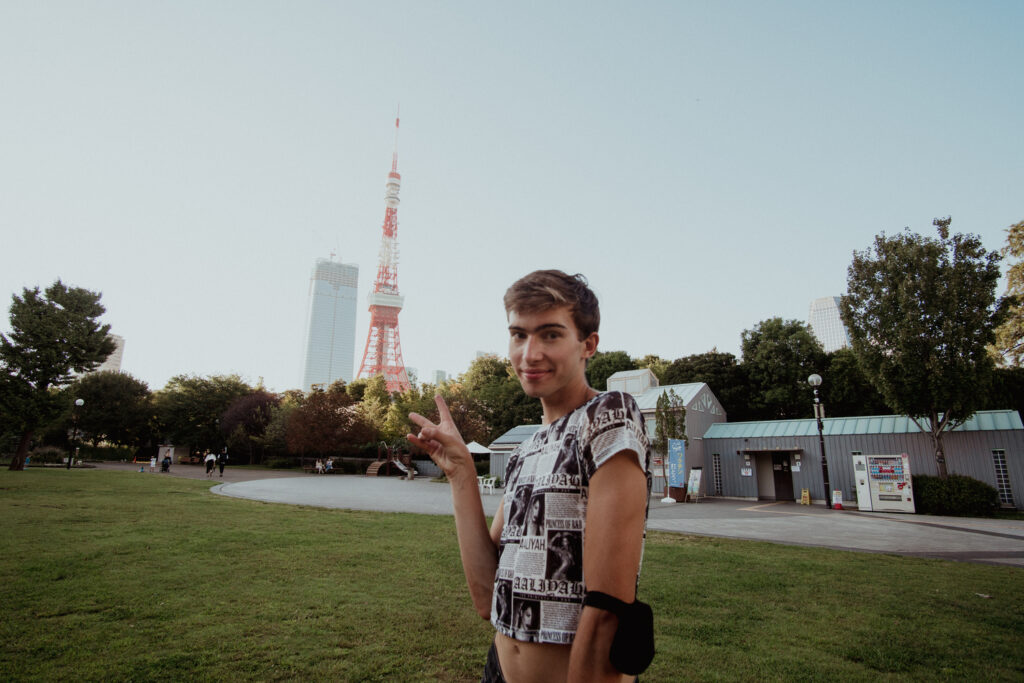
It is extremely safe to travel in Japan alone. Petty crimes are very rare in Japan. Violence towards tourists is very rare in Japan. I traveled to every corner of the country, and the only times I felt I needed to look over my shoulder was at night in entertainment districts.
If you are a female solo traveler, you will still be amazed with Japan’s safety, especially compared to the U.S. Most female solo travelers love being able to walk around alone at night. However, violence towards women does occur. In large cities, there are women-only cars on trains to prevent men from inappropriately harassing women.
Japan has a robust public transportation system that makes it easy and safe to travel around the country without much anxiety. The country also has normalized solo activities, meaning you won’t get stares for eating or drinking alone in a restaurant.
I always recommend that solo travelers purchase travel insurance before going on their trip. You never know when you will need it! (You could get food poisoning in Japan, like I did). Use the widget below to find the plan that best suits your needs.
Do I Need to Rent a Car to Travel in Japan?

You do not need to rent a car during your trip to Japan. I visited every prefecture and some of the most remote areas in the country via trains, buses, and ropeways. Many transportation passes make traveling the country without a car convenient and cost-effective.
The most popular transportation pass is the JR Pass. This unlimited train pass can be purchased online before your trip, allowing you to reserve your spot on the Shinkansen (bullet train). However, your online train pass must be exchanged for a physical ticket at a JR Ticket Office once you arrive in Japan.
There is an entire JR Pass for all of Japan, but there are also cheaper regional passes like the JR East Tohoku Area Pass. I used this pass during my trip around the Tohoku region and saved over $600 because I traveled to 9 prefectures in 5 days.
If you plan to check off many places on your Japan bucket list, purchasing a JR pass is convenient and cost-effective. However, don’t worry about buying a rail pass if you visit only a few cities during your trip. It won’t be worth the money.
Hokkaido
Hokkaido is the most northern prefecture of Japan. I liken it to the Alaska of Japan because it is the least developed region in Japan, known for stunning national parks and brutal winters. Up until the 19th century, Hokkaido was considered the last frontier of Japan.
Best Thing to Do: Hike Mount Meakan
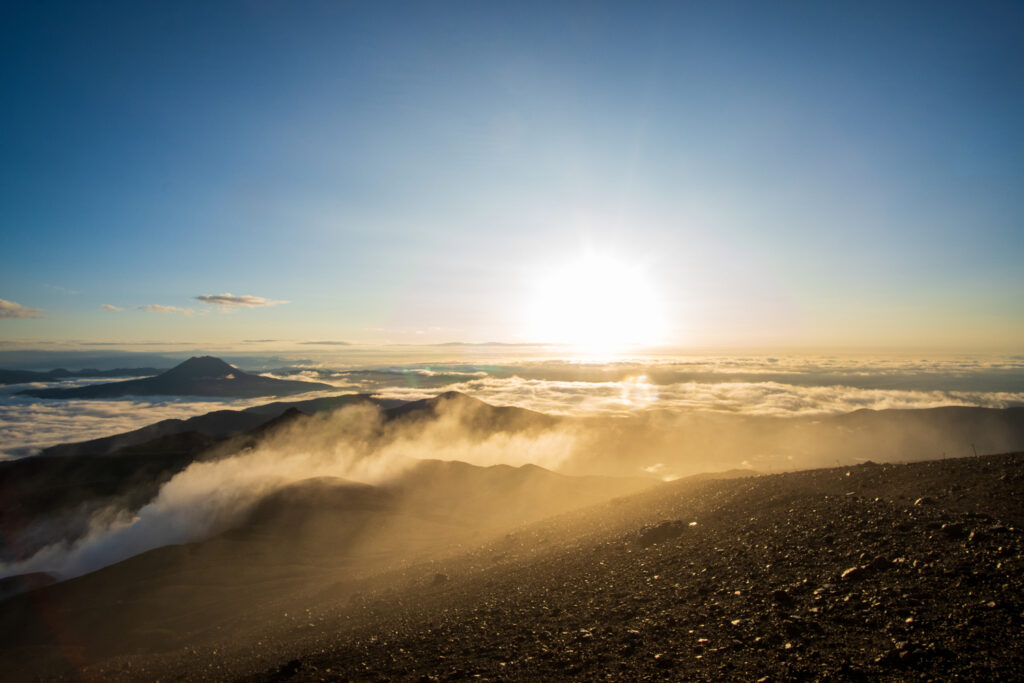
Hokkaido was initially divided into smaller prefectures when it was annexed from the Ainu people, but was consolidated into one prefecture because the population was too small. Now, Hokkaido is significantly larger than any other prefecture; just look at any map.
A great way to learn more about the Ainu people, the indigenous people of Hokkaido, is to visit Akan-Mashu National Park. If you are up for a challenge, you should hike Mount Meakan, an active volcano. Not only does it have insane views, but it is a sacred mountain to the Ainu.
How to Access
After you hike one of Japan’s 100 most famous mountains, you can visit the Ainu cultural village in Akankohan Town. Here you will find traditional Ainu wood carving shops and a theater where you can watch traditional Ainu songs and dance, a great activity to add to your Japan Bucket List.
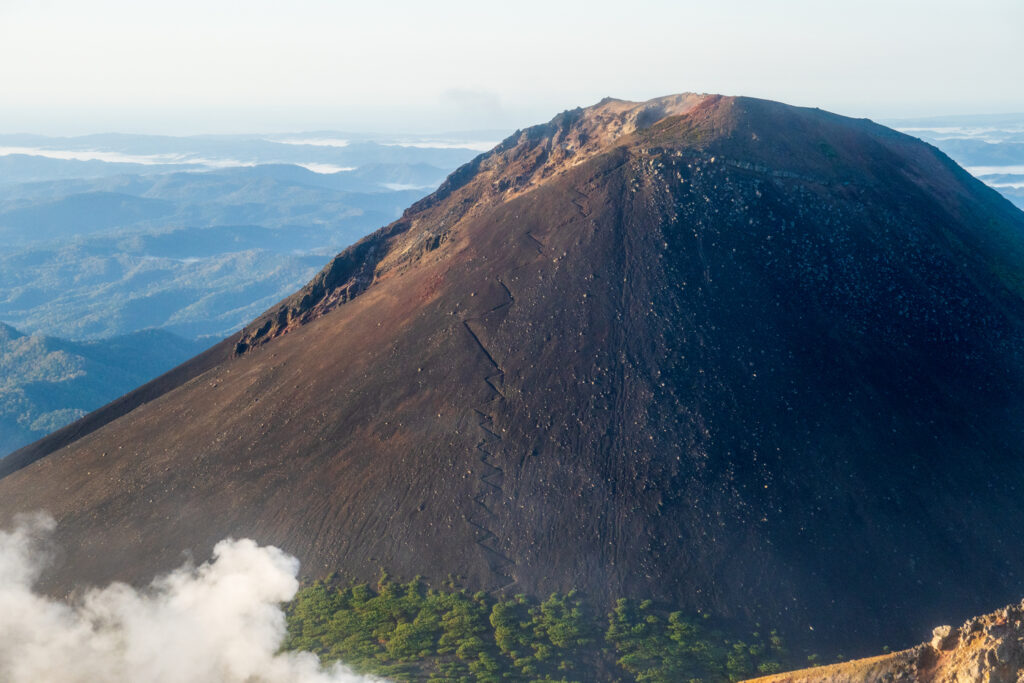
The easiest way to access Akan-Mashu National Park is to take a bus from Kushiro Station Bus Terminal to the Akanko Bus Center. You can buy your ticket at the machine in the bus station for 2,750 yen.
To get from Sapporo to Kushiro, utilize the JR Hokkaido Rail Pass since you are covering a large area. It costs 9,990 yen just for a one-way limited express train ticket. After a few trips, the rail pass would pay for itself. So, it would be most economical to purchase a rail pass.
Where to Stay
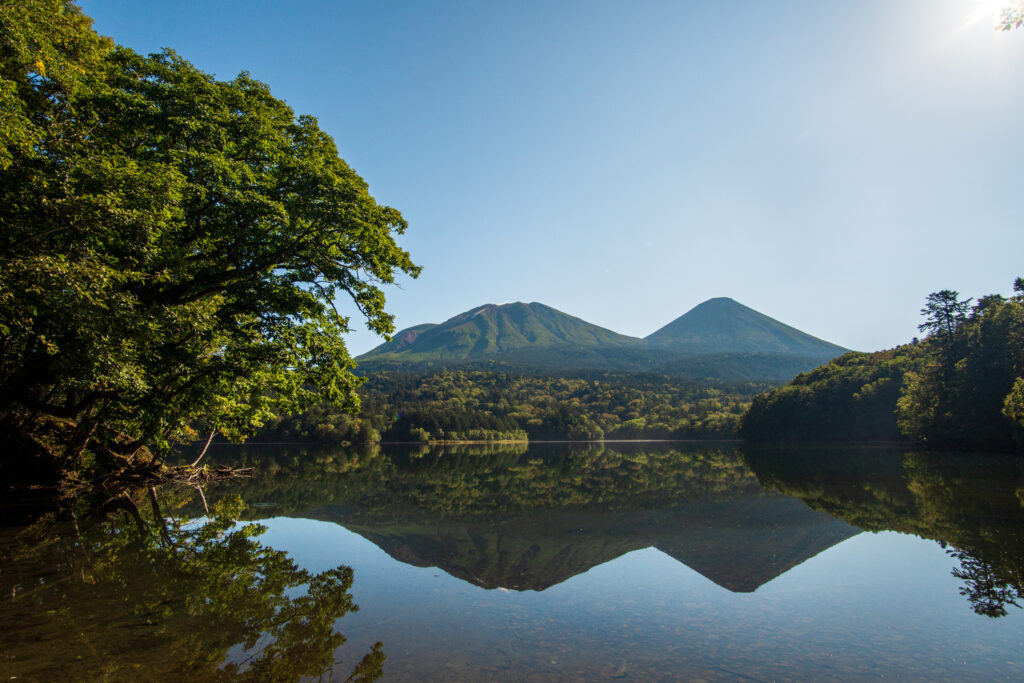
There are two ways to hike to Mount Meakan, from Lake Akan or from Meakan Onsen. If you start from Akanako Town, which is the more convenient place to stay, the hike will be 16 miles round trip. If you start from Meakan Onsen, your trip will only be 7 miles.
Don’t want to hike 9 extra miles? Just go into one of the hotels in Akanako Town, and they can call a taxi for you. If you want to get from Lake Akan to Meakan Onsen, you will have to get a taxi. No public transportation runs between the two areas.
If you stay at Akanako Town, you can camp for 1,000 yen across from the Ainu theater. If you want a more luxurious stay, book the New Akan Hotel for the most incredible rooftop spa overlooking Lake Akan and Mount Oakan.
Tohoku Region
Want to visit a depiction of Buddhist Hell on Earth? In the mood to hike around the most Instagrammable ponds in all of Japan? If so, add visiting the Tohoku Region to your Japan Bucket List and purchase the JR East Tohoku Area Pass. During my 5-day trip to the Tohoku Region, I used this unlimited train pass and saved over $600.
Aomori

Best Thing to Do: Tour Mt. Osore
Mt. Osore (Osorezan) is a relatively unknown place, especially to foreign tourists, but it ranks as one of the three most sacred places in the country. It is difficult to reach this remote sacred mountain, but the journey to Osorezan only adds to the experience.
Although it is known as a sacred space, it is actually said to symbolize Buddhist hell. Once you visit Osorezan, you will see why. There is a temple set in front of an acidic lake, and the grounds surrounding the temple smell of sulfur. It is a very interesting place to add to your Japan bucket list.
You will pay 500 yen to enter the temple grounds. If you are comfortable with public bathing, you can also visit the onsen (gender-separated) in front of the temple’s main hall. The highlight of a trip to Mt. Osore is walking around the lake’s shore and seeing statues of Jizo, a popular Bodhisattva of Japanese Buddhism, who protects souls from evil demons.
How to Access

Mt. Osore is located on a remote peninsula at the top of the Aomori prefecture. You can take public transportation to Osorezan, but you will have to make many transfers. Since Aomori is hard to reach, purchase the JR East Tohoku Area Pass to save money on transportation. If you do purchase the rail pass, just make sure to go to other places in the Tohoku Region within a 5-day window. The pass is only active for 5 days.
If you are starting anywhere south of Aomori, like Tokyo or Sendai, take the Tohoku Shinkansen to Hachinode. Then, transfer to the Aomori Railway and head to Noheji Station. Once in Noheji, transfer to the Ominato line to Shimokita Station. You can use your rail pass on all of these trains.
Finally, you will take a bus from Shimokita Station to Osorezan. Beware, there are only three buses that enter/leave Osorezan. Here is the bus timetable with English descriptions graciously provided by the Aomori Prefectural Office Staff.
Where to Stay

If you are looking for cheap accommodation, you can go to the Kaikatsu Club in Hachinode. Kaikatsu Club is technically an internet cafe, but many Japanese sleep here after the trains stop around midnight. Read my complete guide to staying overnight at an internet cafe in Japan.
Don’t want to stay at an internet cafe? Stay at the Dormy Inn Hachinode.You can also stay at a hotel in Sendai, the biggest city in the Tohoku region, but you will need to wake up early to reach Aomori since train and bus schedules are pretty limited to Mt. Osore.
Iwate

Best Thing to Do: Bike Around Morioka
Iwate is another prefecture that does not see too many foreign visitors. Here, you will find a famous coastline with evidence of the destruction of the 2011 tsunami. However, my favorite activity is to take a self-guided bike tour of Morioka.
Walk 5 minutes from Morioka Station to this bike rental facility where bikes are only 200 yen for the whole day. Bike 2 miles to the Takamatsu Pond, and then bike 2 miles to the Morioka Castle Ruins. Finally, bike 1 mile to the Morioka Hachimangu Shrine.
After your pleasant bike ride, you can replenish your energy by eating Iwate’s specialty, noodles. Near the Morioka Hachimangu Shrine, you will find Hatsukoma noodles. Here you can eat Wanko Soba or all-you-can-eat buckwheat noodles.
Once you finish one bowl of noodles, your server will keep giving you soba until a stack of bowls surrounds you. Some hungry diners eat over 100 bowls of soba. If you aren’t in the mood for 100 bowls of noodles, you can eat at Chokurian. It is another famous noodles shop with a wide variety of different types of soba dishes.
How to Access

Morioka is right on the JR Tohoku Shinkansen line, making it very convenient to reach from Tokyo or Sendai. If you are making long-distance trips from different areas in the Tohoku region, make sure to purchase the JR East Tohoku Area Pass. Within a 5-day period, you can make unlimited trips on the Shinkansen and any local trains.
Where to Stay

You can visit Morioka easily during a day trip from Sendai or even Tokyo. A nice budget hotel close to Sendai Station is the APA Villa Hotel. If you are feeling cheap, there are plenty of internet cafes in Sendai. Read my complete guide to staying overnight at an internet cafe in Japan.
Miyagi
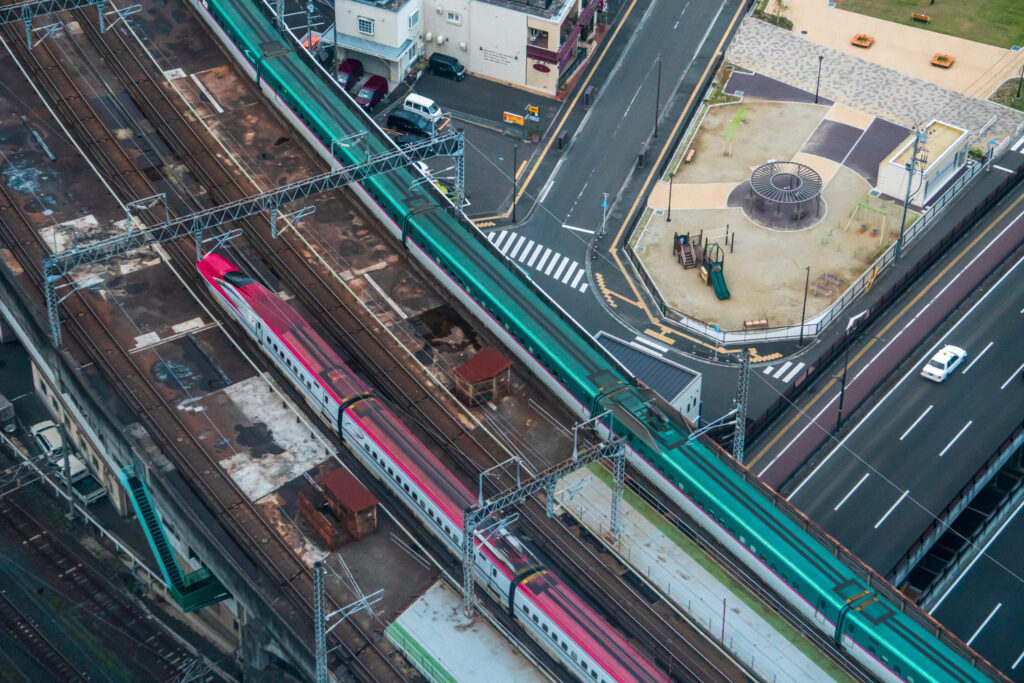
Best Thing to Do: Eat Beef Tongue
Miyagi Prefecture is home to the largest city in the Tohoku Region, Sendai. Sendai has a free observation terrace, a shopping arcade, and a morning market, but the most exciting thing about this city is its specialty in gyutan, or beef tongue.
Is it really worth the trip to Sendai just for beef tongue? I’d argue yes. I would not consider myself much of a fan of beef, but gyutan has a unique texture and flavor that is hard to resist. Plus, when you travel for food, it somehow always tastes better.
If you are feeling adventurous, you can just explore the city and stop by one of the many gyutan restaurants you will see. If you don’t want to go searching for some beef tongue, two of the most popular gyutan places are Gyutan Rikyu and Gyutan Kisuke.
How to Access
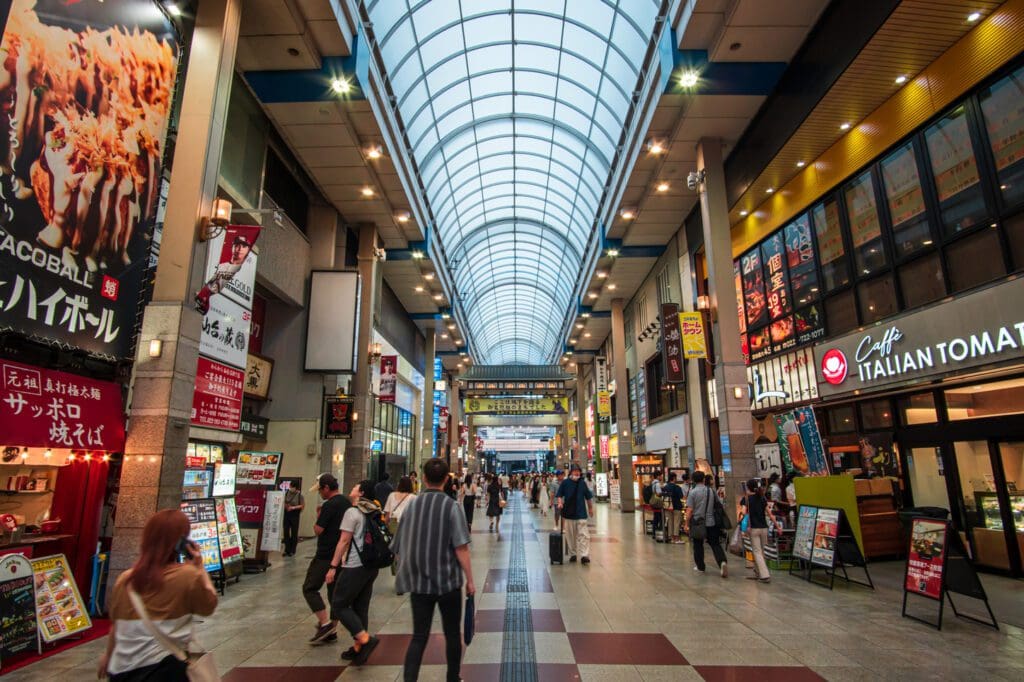
Sendai is right on the JR Tohoku Shinkansen line, making it very convenient to reach from Fukushima, Utsunomiya, or Tokyo. If you are making long-distance trips from different areas in the Tohoku region, make sure to purchase the JR East Tohoku Area Pass. Within a 5-day period, you can make unlimited trips on the Shinkansen and any local trains.
Where to Stay

A nice budget hotel close to Sendai Station is the APA Villa Hotel. If you are feeling cheap, there are plenty of internet cafes in Sendai. Read my complete guide to staying overnight at an internet cafe in Japan.
Akita

Best Thing to Do: Take in Views of Lake Towada
Lake Towada, the crown jewel of the Towada-Hachimantai National Park, is split between Akita and Aomori Prefectures. This deep crater lake reflects a deep blue and is one of the most famous tourist destinations in the Tohoku region.
From the JR Bus Towadako Station, you can walk or bike around the lake’s shore. Here, you can also visit a beautiful shrine and a famous bronze sculpture. If you get hungry, eat fresh fish caught from the lake at Morita.
The highlight of a trip to Lake Towada is going to an observation deck and capturing a panoramic view of the national park. From the bus station, I biked uphill to the Hakka Observatory. Biking here was extremely challenging, so I recommend taking a rental car to this observatory if possible.
How to Access

Since Lake Towada is located in a national park, it is somewhat difficult to reach, but completely covered by JR East Tohoku Area Pass, even the buses to the lake.
If you are starting anywhere south of Aomori, like Tokyo or Sendai, take the Shinkansen to Hachinohe Station. Then, take a JR bus to Towadako Station. If you are starting at Aomori Station, there is also a bus that goes to Towadako Station.
If you are struggling to find the correct platform to board the bus, nearly all large train stations have tourist information centers. Here, you can ask the attendants where the bus boards (English is fine). Google Maps does not have very clear directions for taking buses in Japan.
Where to Stay

Since the buses to Lake Towada leave from Aomori City or Hachinohe, it is easiest to stay in those cities. It takes about two hours to get to the lake from either starting point, so you will want to get on the bus fairly early.
If you are looking for cheap accommodation, you can go to the Kaikatsu Club in Hachinode or Aomori City. Read my complete guide to staying overnight at an internet cafe in Japan. Don’t want to stay at an internet cafe? Stay at the Dormy Inn Hachinode.
Yamagata

Best Thing to Do: Climb Up to the Rissyakuji Temple (Yamadera)
Japan is full of temples. You will find them deep in the mountains and in the middle of a city. However, a visit to the Yamadera is unlike anything in the country. After arriving at JR Yamadera station, cross the Tachiya River and begin ascending the 1,015 stone steps of Yamadera.
Trekking up to Yamadera is one of my favorite activities in the entire Tohoku region. The physically exhausting journey past stone sculptures and shrines to the top of the mountain makes the views even more beautiful.
Although there are many unique structures found in this temple complex, the most impressive is the Godaido Hall. It provides the best views into the deep valley below. The mere 300 yen cost to enter the upper area of Yamadera is worth every cent. Add Yamadera to your Japan bucket list.
How to Access

If coming from Tokyo, it is normally fastest to reach Yamagata by taking the Tohoku Shinkansen to Sendai and then taking the local Yamagata Line from Sendai Station to Yamadera Station. Both of these routes are covered by the JR East Tohoku Area Pass.
Where to Stay

The Yamadera Temple is located close to the border of Miyagi and Yamagata. So, it is typically more convenient to stay in Sendai. A nice budget hotel close to Sendai Station is the APA Villa Hotel. If you are feeling cheap, there are plenty of internet cafes in Sendai. Read my complete guide to staying overnight at an internet cafe in Japan.
Fukushima

Best Thing to Do: Hike the Goshikinuma Ponds and Mt. Bandai
In Fukushima, arguably, the most famous attraction is the Goshikinuma Ponds. This series of 5 ponds reflects otherworldly colors due to the area’s volcanic activity. Depending on the time of the year, these ponds appear anywhere from lime green to deep turquoise.
Behind the picturesque ponds sits Mt. Bandai, one of Japan’s 100 most famous mountains. If you are up for a challenging day hike, you can start at the ponds and make your way to the top of the stratovolcano. An epic hike to add to your Japan bucket list.
You will start your hike to the ponds from Goshikinuma Iriguchi bus stop. After 3 miles, you will reach Lake Hibara where you can begin the 5-mile ascent to Bandai. At the top of Bandai, you can go back the same way you came or descend 5 miles via a steep trail to Okinashima Station where you can eventually make your way back to Koriyama. It is a difficult, long journey, but one of the best day hikes in the entire country.
How to Access

Take the Tohoku Shinkansen to Koriyama, utilizing the JR East Tohoku Area Pass. From Koriyama Station, take the Ban-Etsusai Line to Inawashiro Station, also covered by the Tohoku Area Pass. At Inawashiro Station, take a bus for 790 yen to Goshikinuma Iriguchi bus stop where you can begin the Goshikinuma Ponds hike.
Where to Stay

Koriyama is the largest city near this section of the Bandai Asahi National Park. If you are looking for cheap accommodation, you can go to the Kaikatsu Club in Koriyama. Read my complete guide to staying overnight at an internet cafe in Japan. Want a bit more privacy? Stay at the Comfort Hotel Koriyama.
Kanto Region
Home to two of Japan’s largest cities, Tokyo and Yokohama, the Kanto region is a great area to visit if you want to explore city centers and theme parks. In the mood to admire nature, the Kanto Region also holds the majestic Nikko National Park, which is not too far from Tokyo and covered by JR East Tohoku Area Pass.
Tokyo

Best Thing to Do: Cross Shibuya Crossing
Tokyo is the largest metropolitan area in the world, so selecting one activity to do was difficult. I decided to go with walking across the busiest pedestrian crossing in the world, not because it is original, but because it is memorable.
Every single Tokyo travel guide mentions Shibuya Crossing (also known as Shibuya Scramble). Literally, every guide. It is crazy to think that walking across a street is maybe the most sought-after tourist activity in the city, but after you walk across the street for the first time, you will understand why.
Try visiting the crossing on a weekend night if you desire the most adrenaline-inducing experience. Besides crossing the infamous street, make sure to visit the Hachikō Statue. It commemorates a loyal dog who used to wait for his owner to come home from work each day outside the station.
After the owner died at work, Hachikō would return to the station every day for the next nine years, waiting for his owner to return.
How to Access

From anywhere in Tokyo, you can easily access Shibuya Station. Once you reach Shibuya Station, head for the Hachiko Exit. You can take in a great view of the crossing at the bridge that connects the Shibuya Mark City Shopping Center with Shibuya Station’s Toyoko Store; just get out of the way of many pedestrians onto their next train.
Don’t want to be surrounded by large crowds of people? You can admire the action in a calm environment for free! Head to the Shibuya Hikarie Sky Lobby. You can access the Sky Lobby by taking an elevator up to the 11th floor at Shibuya Station’s B5 exit.
Where to Stay

You can stay anywhere in Tokyo for easy access to Shibuya Crossing. My favorite district to stay in the city is Shinjuku. Shinjuku has great nightlife like Shibuya, but also has calm resting spots like the Shinjuku Southern Terrace and Shinjuku Gyoen National Garden.
Kanagawa
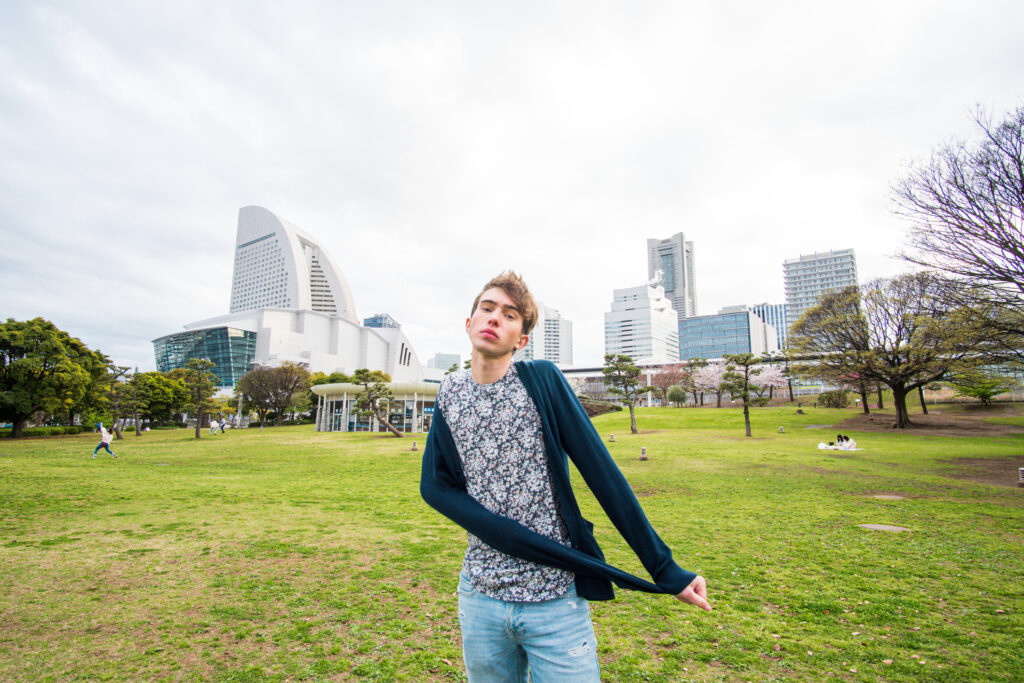
Best Thing to Do: Sightsee in Yokohama
Kanagawa is home to Yokohama, the second-largest city in the country behind Tokyo. I actually prefer visiting Yokohama over Tokyo, partially because of its impressive Minato Mirai district, which translates to “harbor of the future.”
In this urban port, you will find the Landmark Tower, which used to be Japan’s tallest building until 2014. You won’t regret a trip up to its observation deck.
Make sure to stop by the many specialty shops in Yokohama World Porters and at the Yokohama Red Brick Warehouse. In the spring, Yokohama Park comes alive with colorful tulips.
Beyond shopping, you can walk around Rinko Park, one of my favorite urban parks in the country. Walk down Osanbashi Hall for scenic views of the city and the Yokohama Bay Bridge. Eat at Chinatown, the largest Chinatown in Japan. There is so much to see in Yokohama, worthy of adding to your Japan bucket list.
How to Access
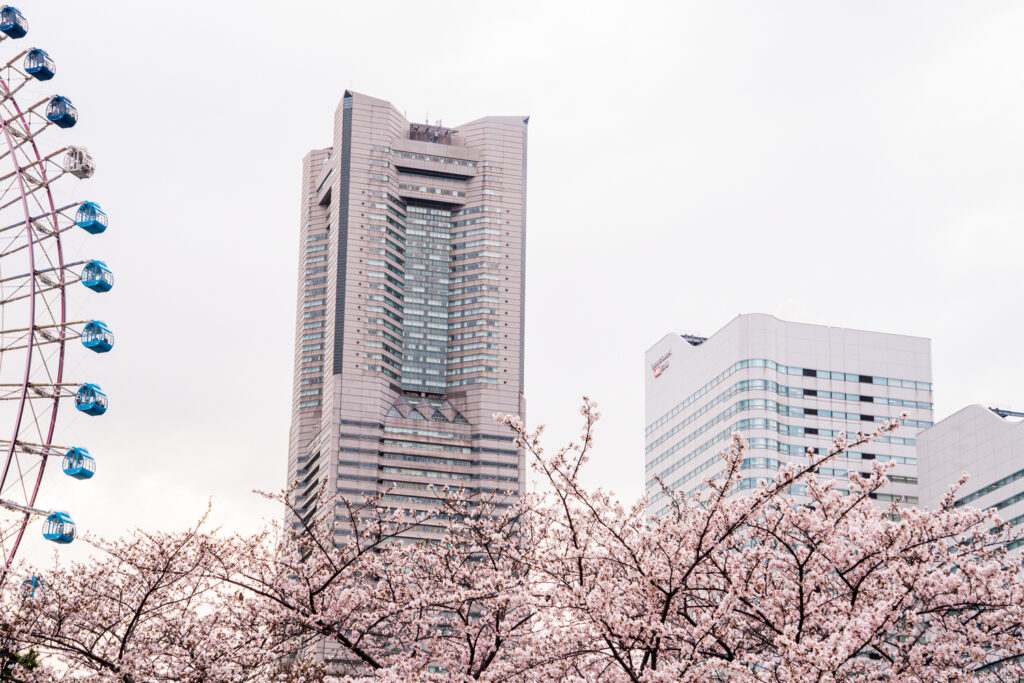
Yokohama can be easily accessed from Tokyo via many local train lines. The best routes vary based on the time of day. Use Google Maps to find the cheapest and fastest route from Tokyo.
If you are coming to Kyoto or Osaka, take the Tokaido-Sanyo Shinkansen to Shin-Yokohama Station and transfer here for the Yokohama line.
You might think Yokohama Station is a good place to begin sightseeing in the town. However, that station is not really near any tourist spots. Sakuragichō Station is a good place to begin sightseeing in Yokohama, as it is near the Minato Mirai district.
Where to Stay

A cheap place to stay in the Minato Mirai district with nice views of the entire port is APA Hotel & Resort Yokohama Bay Tower. Feeling extra cheap? You can go to the Kaikatsu Club and get your own private room. First time staying at a Kaikatsu Club? Read my guide here.
Chiba

Best Thing to Do: Visit Tokyo DisneySea
Conveniently located minutes away from Tokyo in Chiba is Tokyo Disney Resort. Here, you will find two different parks, Tokyo Disneyland and Tokyo DisneySea. If you want the most thrilling, unique Disney experience, you must visit DisneySea.
Get here early because Japanese tourists are willing to wait in long lines, and make sure to ride Toy Story Mania, Tower of Terror, and Journey to the Center of the Earth. After enjoying the rides, get the pink shell sea salt ice cream monaka.
You can conveniently purchase tickets on Klook. Once you enter the park, the staff will simply scan your QR code. Just add your ticket to the Tokyo Disney Resort App beforehand.
How to Access

It is very easy to access Tokyo DisneySea from Tokyo. Depending on where you start in the city, take the JR Keiyo Line or JR Musashino Line to Maihama Station. Here, switch to the Disney Resort Monorail, pay 260 yen, and get your camera ready.
This train is completely Disney-themed down to the train handles. It is a great way to start a magical day at Disney. You’ll reach Tokyo DisneySea at the third stop, Tokyo DisneySea Station.
Where to Stay

If you want cheap accommodation near Disney, stay at FLEXSTAY INN Shin Urayasu. It is especially convenient to stay here if you are considering spending more than one day at the parks.
Saitama

Best Thing to Do: Escape the City at Omiya Park
Saitama isn’t really known to attract tourists. It is more of a place where people live who want to be near Tokyo. Omiya, the largest city in the prefecture, has plenty of thrift stores and arcades, but my favorite thing to do in Saitama is to picnic at Omiya Park.
Omiya Park is less than a mile from the bustling Omiya Station, and it is a great place to escape crowds in the very densely populated Kanto Region. Omiya Park is also home to a zoo and a history museum. It is also one of the most famous areas in Saitama to view cherry blossoms.
A visit to Omiya Park does not have to be an all-day activity. Maybe just plan to picnic here during a layover at Omiya Station. Although picnicking at a park is not super-exciting, it is a great way to feel more like a local and not a tourist.
How to Access

From Omiya Station, take the Tobu Urban Park line to Omiya-Koen Station for a short walk to Omiya Park. If you want to save 160 yen, walk a mile from Omiya Station to Omiya Park. Omiya is a major train transfer point, so it is covered by the JR East Tohoku Area Pass.
Where to Stay

Omiya Park during cherry blossom season is a great day trip from Tokyo. When I stay in Tokyo, I like to stay in a capsule hotel because they are cheap and offer ample privacy.
Gunma

Best Thing to Do: Take a Retreat to Kusatsu Onsen
Visiting an onsen town is arguably the most popular way the Japanese like to relax. Onsen towns are usually located near an abundance of hot spring water. This mineral-rich water is pumped into luxurious bathing facilities. Shops and cafes surround these bathing facilities and create the ideal place to take a relaxing vacation.
Kusatsu Onsen is one of the premier onsen towns in the country. Stroll around the forested Sainokawara Park and relax at the many natural foot baths along the walking trails. Enjoy a quintessential onsen experience at the Sainokawara Open-air Bath.
Even if public bathing is not your forte, you won’t be bored during a visit to Kusatsu. Take photos of Yubatake, an Instagram-worthy display of the geothermal water. Go to Kusatsu Onsen Netsunoyu and watch the traditional way of cooling the hot spring water for bathing.
How to Access

There are many ways to access Kusatsu Onsen since it is very popular. The fastest way is to take the Shinkansen from Tokyo or Ueno Station to Takasaki Station. Transfer to the Agatsuma Line to Naganohara-Kusatsuguchi Station. From there, ride a local bus for about 25 minutes to Kusatsu Onsen.
This route is covered by the JR East Tohoku Area Pass. Within 5 days, you can make unlimited trips on the Shinkansen and any local trains. So, if you plan to visit Kusatsu Onsen along with other destinations like Nikko or Sendai, it is most cost-effective to purchase this rail pass.
Where to Stay

Kusatsu Onsen is a famous place for Japanese to stay in Japan. So, there is no shortage of accommodation in Kusatsu, but most of them are fairly expensive. The Kusatsu Onsen Hotel Resort is one of the cheapest places to stay in the area.
Tochigi

Best Thing to Do: Admire the Toshogu Shrine
Within Tochigi’s Nikko National Park, you will find one of the most famous shrines in the entire country, the Toshogu Shrine. The shrine is a memorial to the founder of the Tokugawa Shogunate, which ruled the country for over 250 years until 1868.
Traditional shrines in Japan are simple by nature. However, the Toshogu Shrine goes against this norm. There are intricate wood carvings covered in gold leaf on every structure. The cost to enter the Toshogu shrine is 1300 yen, which is fairly expensive, but worth every cent.
This shrine is also stunning because of its beautiful setting in Nikko National Park, surrounded by rushing streams and famous mountains. After touring the shrine, you can hike the famous Mt. Nantai or take a bus to the roaring Kegon Falls.
How to Access

Nikko is easy to access from Tokyo. Take the Tohoku Shinkansen from Tokyo Station to Utsunomiya Station. Transfer to the Nikko Line to Nikko Station. From Nikko Station, you can walk 1.5 miles to the shrine or take a bus.
If you are visiting Nikko along with places like Sendai or Fukushima, purchase the JR East Tohoku Area Pass. However, if Nikko is as far north as you plan to go from Tokyo, it would not be cost-effective to purchase a rail pass.
Where to Stay

You can reach Nikko on a day trip from Tokyo. If so, stay at a cool capsule hotel in Shinjuku. If you want to do more hiking in Nikko, you should stay near the park at the K’s House Nikko – Kinugawa Onsen Hostel.
Ibaraki

Best Thing to Do: Smell the Roses at Hitachi Seaside Park
Ibaraki consistently ranks as one of the least attractive prefectures, which baffles me because it has the very aesthetic, Instagrammable Hitachi Seaside Park. If you are a fan of flowers and dreamy park visits, this is the place for you.
The best time to visit the park is during late April to mid-May when the park’s most signature flower, the blue nemophila, is in full bloom. However, you can visit this park year-round. The park lists the current flowers that are in bloom.
This is no average flower park. It is massive (it has a west and south entrance). The best way to visit the various flower gardens and amusement areas of the park is to rent a bike near the entrance of the park. The fee is 650 yen for one day.
How to Access

You can visit Hitachi Seaside Park on a day trip from Tokyo. From Tokyo Station, take the Hitachi and Tokiwa line to Katsuta Station. At Katsuta Station, you will take a 15-minute bus ride to the park for 400 yen.
If you are visiting Hitachi Seaside Park along with places like Sendai, Nikko, or Fukushima, purchase the JR East Tohoku Area Pass. However, if Ibaraki is as far north as you plan to go, it would not be cost-effective to purchase a rail pass.
Where to Stay

Since you can reach the gardens on a day trip from Tokyo, stay at this cool capsule hotel in Shinjuku. Capsule hotels are such an iconic part of staying in Tokyo. They are cheaper than regular hotels and have more privacy than your typical hostel. You won’t regret staying in one.
Chubu Region
If you love mountains, this is your ideal setting. Chubu is located in the heart of Japan and is home to the world-famous Mt. Fuji. Running down Fuji’s volcanic gravel is exciting, but visiting the Togakushi Mountains and sightseeing across the Northern Japanese Alps are the true highlights of Chubu, my favorite region of Japan. There is plenty here to add to your Japan bucket list.
Niigata

Best Thing to Do: Hike to Kasugayama Castle Ruins
Castle ruins are spread all across Japan and stand as a reminder of Japan’s warring history. Kasugayama Castle Ruins, located in the seaside town of Joetsu, is one of the country’s most robust systems of castle ruins.
The castle was once home to Uesugi Kenshin, one of the most famous warlords during the Sengoku Period. If you visit the ruins, you can read many informative signs in English describing the castle that once stood on top of Mt. Kasuga. You will be rewarded with stunning views of the Sea of Japan and the Myoko mountains.
Although few castle structures stand today, trekking up the mountains to Kasugayama is an unforgettable experience. In addition to visiting the castle, head to the nearby Rinsenji Buddhist Temple and the Takeda Castle.
How to Access

Joestu is not a super common stop for foreign visitors, but worth the few extra train transfers. Take the Hokuriku Shinkansen from either direction (Nagano City or Kanazawa) and stop at Jōetsumyōkō Station. If you are coming from Kyoto or Tokyo, purchasing the Hokuriku Arch Pass to reach Niigata is most cost-effective.
From Jōetsumyōkō Station, transfer to the Local Naoetsu on the Myoko-Haneuma Line to Kasugayama Station. From Kasugayama Station, walk 1.5 miles to the Kasugayama Shrine, where you can take a picturesque mountain trail to the castle ruins.
Where to Stay

It is easiest to stay in Nagano City because it is less than an hour from the castle ruins. I recommend staying at the Worldtreck Dinner & Guesthouse Pise because it is in a central area of the city, near Zenkoji Temple.
Aichi

Best Thing to Do: Tour Nagoya Castle
Alongside Tokyo and Osaka, Nagoya is one of the three major cities of Japan. However, it is known to be the least exciting of these three cities. Although I agree with that assumption, visiting Nagoya Castle is well worth visiting Aichi.
Nagoya Castle was the country’s first castle to be designated a National Treasure. It was one of the largest castles in the country and helped contribute to Nagoya’s growth. Unfortunately, the castle is currently undergoing major renovations. The main castle is not earthquake-resistant, so it will be torn down in 2024 and reconstructed by October 2028.
Even though the main castle is no longer accessible, you can visit the castle’s place, Honmaru Goten, which was recently rebuilt. It is a really beautiful structure with grand reception halls and interesting artwork.
How to Access

You can reach Nagoya from Kyoto in less than an hour. Purchase this Japan Rail Pass, and you can get unlimited rides across the entire country. This is only cost-effective if you plan to visit a new place every few days.
From Nagoya Station, transfer to the Sakuradori Subway Line to Hisayaodori Station and change to the Meijo Subway Line to Nagoyajo Station. Follow signs for Nagoya Castle.
Where to Stay

Nagoya is a large city, so fairly cheap hostels and hotels are abundant. Stay at the highly-rated Glocal Nagoya Backpackers Hostel. It is only a 7-minute walk from Nagoya Station.
Shizuoka
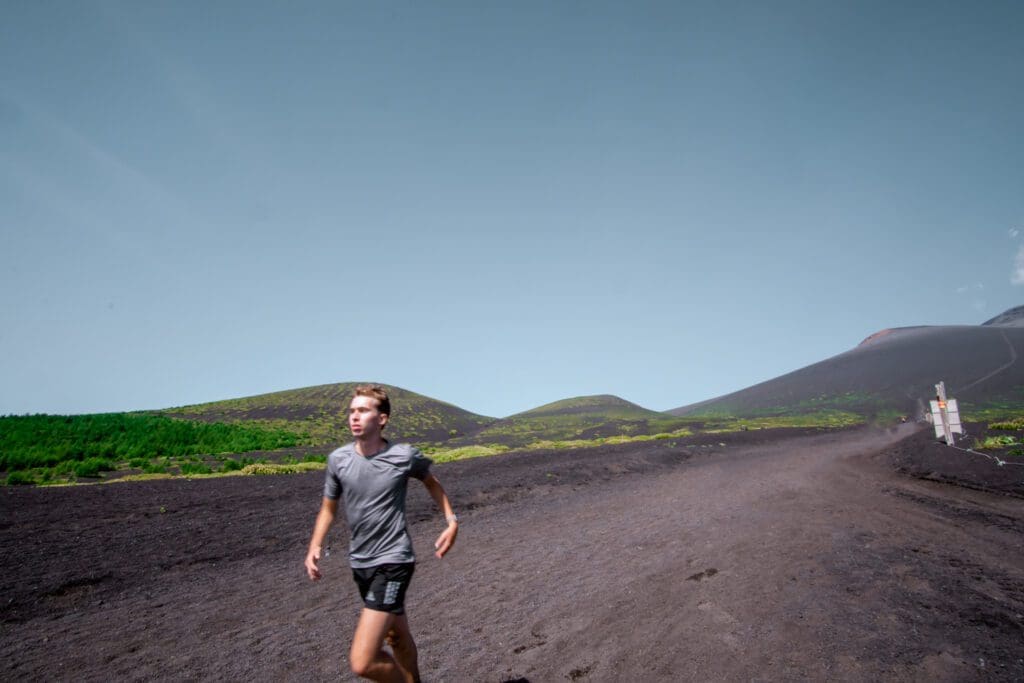
Best Thing to Do: Slide Down the Gotemba Trail
The most famous attraction in Shizuoka is the iconic Mt. Fuji. Hiking Mt. Fuji is a rewarding experience, and nothing quite compares to watching the sunrise atop the mountain. However, my favorite part of climbing Fuji was descending down the sandy Gotemba Trail.
The last 1/3 of the trail is exclusively loose gravel and rocks, which makes it a fun trail to run down the mountain. Besides this trail’s exciting sand run, the views of Lake Yamanaka from the trail are breathtaking. While descending, take a brief detour to Hoiezan, another volcano on the southeastern side of Fuji, for expansive views of Shizuoka.
Although I loved going down the Gotemba Trail, I would not recommend taking the trail round-trip. If you want to watch the sunrise on top of Fuji, ascend from the Yoshida Trail since it is shorter and easier than climbing up Gotemba’s sandy scramble.
How to Access
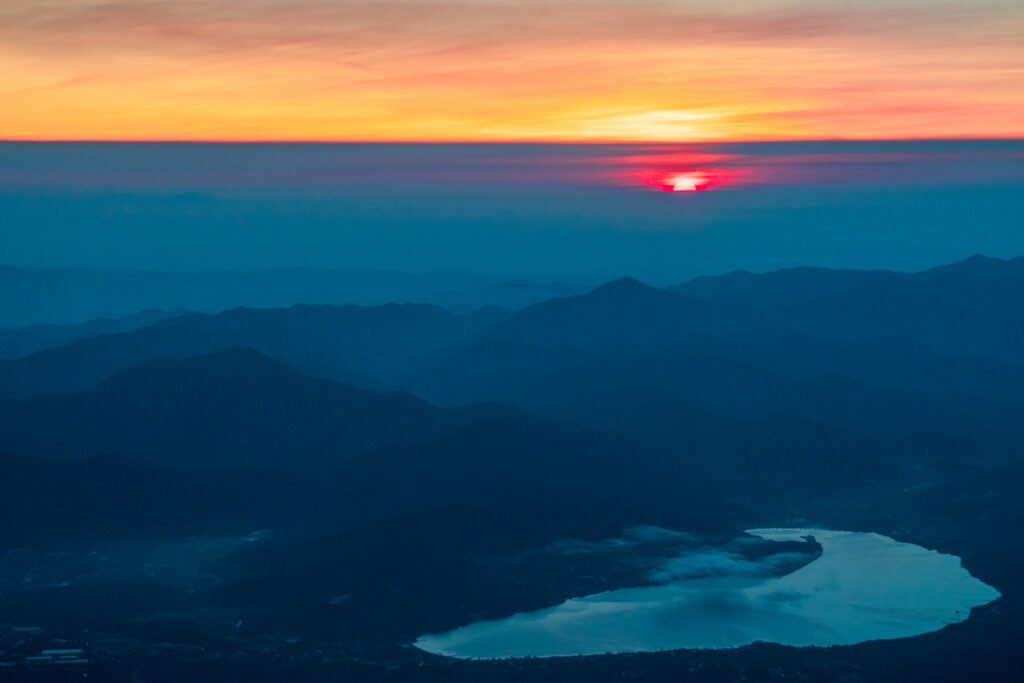
There are many different ways to access Mt. Fuji’s hiking trails, and it really depends on where in the country you are coming from. However, most people start at Kawaguchiko Station. For more information on accessing Fuji, read information from japan-guide.com.
You can take a bus from Kawaguchiko Station to reach the Fuji-Subaru Line 5th Station, where you can ascend the Yoshida Trail to Fuji. After descending Fuji on the Gotemba Trail, you can take a bus back to Kawaguchiko Station from Gotemba 5th Station.
Where to Stay

After your hike, you can stay nearby at Dot Hostel & Bar, located along Lake Kawaguchi. This is probably my favorite hostel in the entire country because it is extremely cozy and private.
Kawaguchi is a small area full of traditional Japanese inns that are stunning but so expensive. However, even a budget traveler can stay overnight in this gorgeous area and wake up to views of Fuji, thanks to Dot Hostel.
Mie

Best Thing to Do: Worship at the Ise Grand Shrines
Mie is an often overlooked prefecture, but you should not skip visiting this mystical area. The prefecture is home to the most important Shinto shrine in the country, dedicated to the sun goddess.
The most interesting feature of this shrine complex is that the principal structures are rebuilt every 20 years in a process known as shikinen sengu. The structures are rebuilt exactly to the previous designs to re-energize the power of the shrines. The pieces of the old shrines are then redistributed to shrines across the country, where they are said to receive new energy.
The shrines themselves are less dramatic than Nikko’s Toshogu Shrine, another famous shrine in the country, as the architectural style reflects traditions from 4 BCE. A highlight of visiting Ise Grand Shrines is crossing the Uji Bridge, as five million people do yearly, and watching worshippers purify themselves in the river and pray for the prosperity of Japan.
How to Access

The easiest way to access Naiku (Ise’s inner shrine) is by taking a day trip from Nagoya. Take the Express Toba on the Kintetsu-Nagoya Line to Isuzugawa Station (1,750 yen and not covered by the JR Pass) from Kintetsu Nagoya Station.
However, you can purchase the Kintetsu Rail Pass for unlimited travel between Osaka, Nara, Kyoto, Nagoya, and Mie. This pass is significantly cheaper than most JR rail passes, but the only downside is you must pay extra to take a limited express train.
From Isuzugawa Station, walk 1.5 miles along the tranquil Isuzu River and stop at the charming Okage Yokocho area before crossing the Uji Bridge to Naiku.
Where to Stay

Nagoya is the closest major city to the Ise shrines. Stay at the highly-rated Glocal Nagoya Backpackers Hostel. It is only a 7-minute walk from Nagoya Station.
Yamanashi

Best Thing to Do: Bike Around Lake Kawaguchi
Yamanashi is home to the Five Fuji Lakes that formed from previous Mt. Fuji eruptions. Visiting these lakes is a great way to enjoy scenic views of Mt. Fuji. The most accessible and developed lake is Lake Kawaguchi.
Although you can do plenty of activities around Lake Kawaguchi, like visiting the Yamanashi Gem Museum or taking the Mt. Fuji Panoramic Ropeway, my favorite is biking around the lake. Biking is the best way to take in immersive views of Fuji.
After renting a bike from Dot Hostel, you can circle around the lake in 12 miles. If you want more of a workout, you can also head to the nearby Saiko Lake. At Saiko Lake, make sure to head to Saiko Nenba-hama for a great view of Fuji and Lake Saiko Bat Cave for an interesting self-guided cave tour.
How to Access

There are a few different ways to access Lake Kawaguchi. You can take a limited express JR train from Nagano to Kofu Station, covered by JR East Nagano Niigata Area Pass. From Kofu Station, you can take a bus to Lake Kawaguchi.
If you are coming from Tokyo, start at Shinjuku Station and take the JR Chuo Line to Otsuki Station. This trip is covered by the JR Pass. Then, transfer to the Fujikyu Line to Kawaguchiko Station, which is not covered by the pass. From Kawaguchiko Station, you can take a local bus to Lake Kawaguchi.
Where to Stay

If visiting Lake Kawaguchi is on your Japan bucket list, staying at Dot Hostel is a no-brainer. Kawaguchi is a small area full of traditional Japanese inns that are stunning but so expensive. However, even a budget traveler can stay overnight in this gorgeous area and wake up to views of Fuji, thanks to Dot Hostel.
You can also rent a bike from the hostel for 1,000 yen. In less than 10 minutes, you can reach Momiji Tunnel, one of the most iconic Fuji photo spots.
Nagano
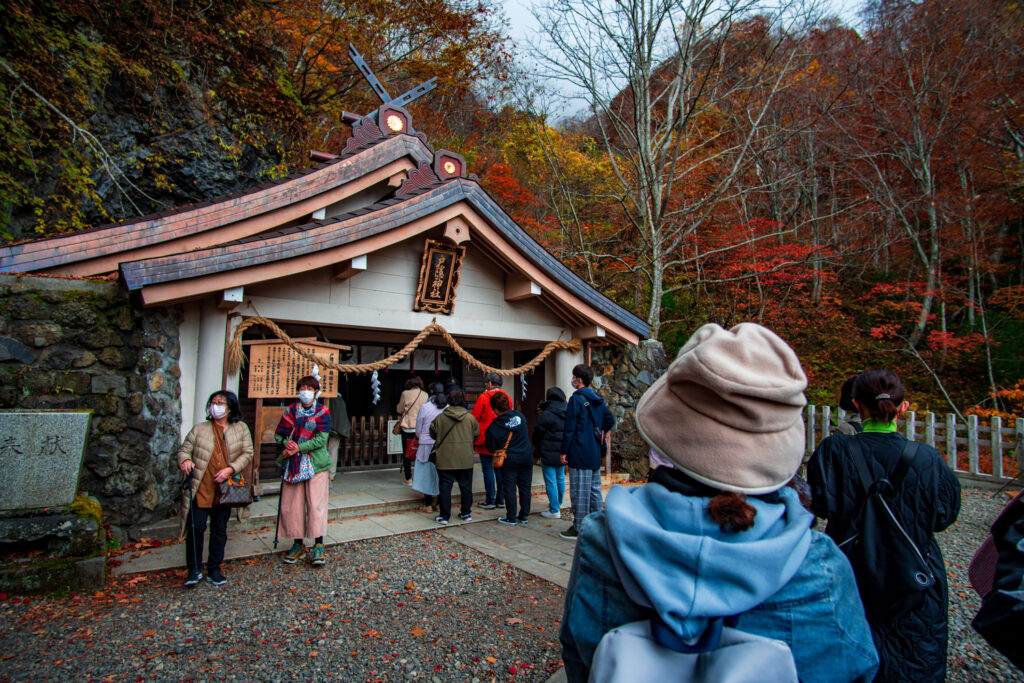
Best Thing to Do: Dwell With Gods in Togakushi
I called Nagano home for a year, so picking the best place in this idealistic prefecture is extremely difficult. However, I think Togakushi is one of the most scenic places in the entire country. Known to the Japanese as a “power spot” where Gods dwell, this highland is home to a national park, a campground, a ski resort, and a 5-shrine pilgrimage hike.
In Togakushi, you must visit the Kagami Ike Pond for insane fall foliage. If you are lucky, you will see the jagged Togakushi mountains behind the pond on a clear day. These mountains are so distinct and unlike any other mountains in Japan. If you are up for a challenge, you should try to summit Mt. Takamatsu.
Deep in the Togakushi Mountains, you will gain over 4,000 feet of elevation to reach Mt. Takamatsu. The route takes approximately 8.5–9.5 hours and is considered one of the longest trails among the 100 famous mountains in Japan.
In the winter, you can admire Mt. Takamatsu while skiing with locals at Togakushi Ski Resort. Unlike Hakuba Village in Nagano, which attracts many foreigners, skiing at Togakushi is perfect for those who want to find space on the slopes.
How to Access
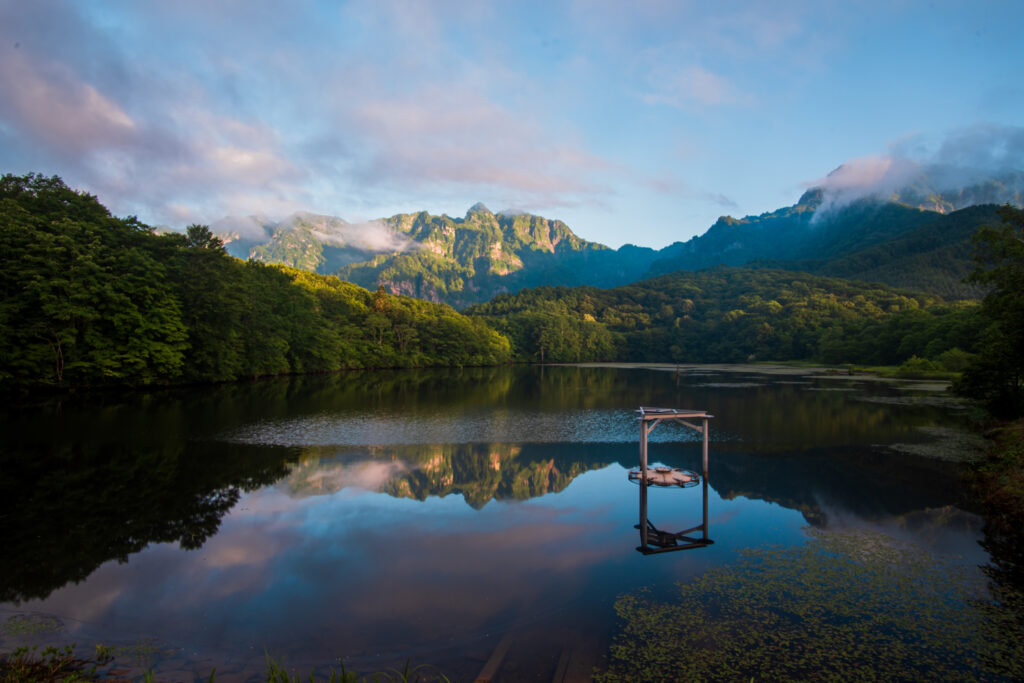
Nagano can be easily accessed from Kanazawa or Tokyo. Take the Hokuriku Shinkansen to reach Nagano Station. If you are taking other trips around Nagano to Hakuba or Snow Monkey Park, purchase the JR East Nagano Niigata Area Pass.
Exit Nagano Station by using the Zenkoji Exiting and buy your bus ticket to Togakushi at the Alpico Bus Ticket Office (1,350 yen one-way). Directly outside of the ticketing office is bus stop 7, where you can board the bus to Togakushi.
During the skiing season, this ticket office sells ski packages. You can buy a lift ticket, equipment rental, and bus ticket here at a very reasonable price.
Where to Stay

If you visit in the summer, you can tent camp at Togakushi for 3,000 yen. It is one of the largest campgrounds in the country and has plenty of amenities like a camp store and shower.
If you are visiting during colder months, it is very convenient to stay in Nagano City. Nagano City is only an hour’s bus ride away. Stay at Worldtreck Dinner & Guesthouse Pise in Nagano City because it is a central area near Zenkoji Temple.
Gifu
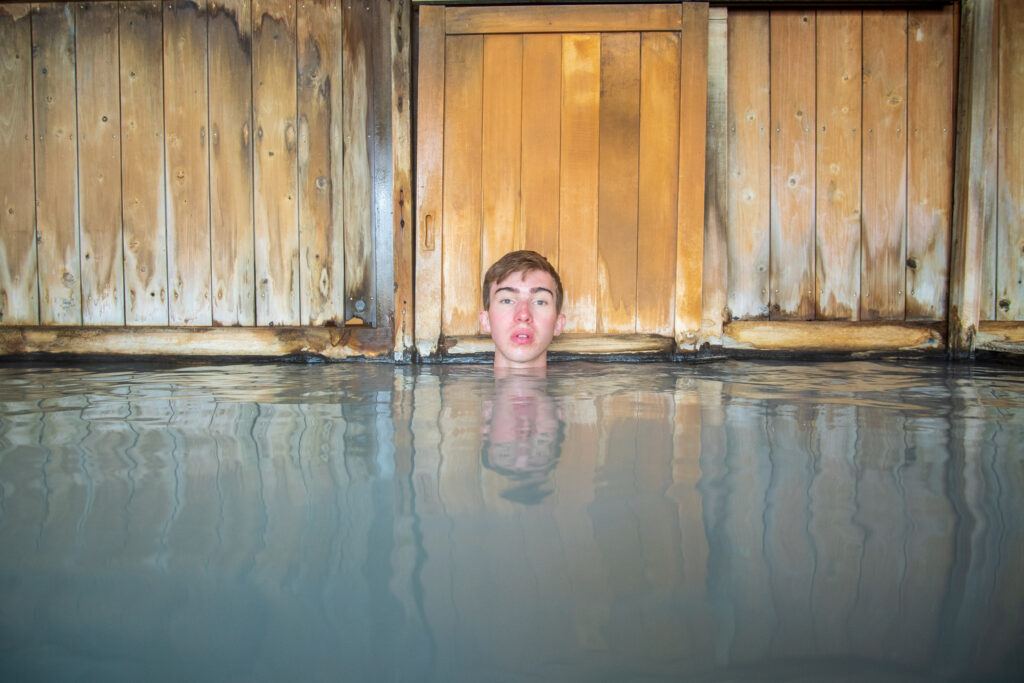
Best Thing to Do: Book a Private Bath
Visiting an onsen is a must-try cultural experience when visiting Japan. However, some foreigners are hesitant to partake in public bathing because it is exactly that: public bathing and no swim trunks are allowed (unless it is mixed-gender bathing).
Luckily, private bathing is available at Hirayu no Mori, a charming onsen surrounded by the Northern Japanese Alps. At Hirayu no Mori, private baths can be used for 45 minutes per group for 1,000 yen per person. Available hours for using the bath are 12:00 to 15:00 (Reception until 14:15). There is no online reservation system; just arrive in the morning in person to reserve a time slot.
A visit to Hirayu no Mori is perfect after snowshoeing in one of the most popular sites in the Chubu Sangaku National Park, Kamikochi. Dip into the mineral-rich hot spring water after taking the double-decker Shinhotaka Ropeway to a famous mountain overlook. You can also stop at Hirayu on your way to Takayama, a relaxing city known for its traditional architecture and morning markets.
How to Access
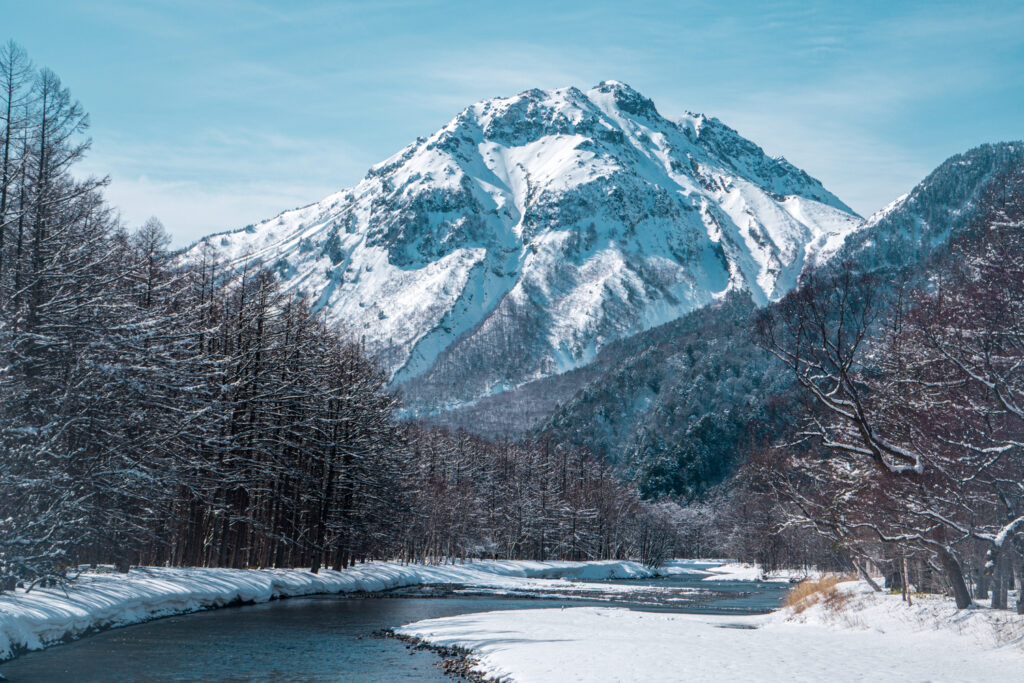
Accessing Hirayu onsen during a trip from Takayama or Matsumoto is best. I recommend purchasing the 4-Day Alps WIDE Free Passport. I used this transportation pass during my visit to Hirayu, and it made for the perfect winter retreat.
This ticket gives you unlimited bus rides for 4 days to the Shirakawago Village, Takayama, Matsumoto, Kamikochi, and Hirayu. You can even purchase a package that includes a return ticket for the Shinhotaka Ropeway.
Where to Stay

Hirayu no Mori is a great day trip from Takayama. Takayama is worth visiting because of its Edo-period streets, mountain views, and morning markets. It is a relaxing, charming city that still sees some tourists but is less busy than Tokyo or Kanazawa.
A perfect place to stay that complements the city’s energy is Guesthouse Tomaru. It is like staying at a traditional Japanese hotel without paying the high cost. A family runs the guesthouse, and they live in the house as well. This homely experience makes staying in Takayama even more magical.
Toyama

Best Thing to Do: Take the Tateyama Kurobe Alpine Route
Nothing will prepare you for the indescribable journey to Tateyama, one of the most sacred mountains in Japan. You will want to add it to your Japan bucket list. You can travel the country’s premiere mountain sightseeing route across the mesmerizing Northern Alps from Tateyama, Toyama, to Omachi, Nagano, through an intricate series of trains, buses, cable cars, and ropeways.
The highlight of the 5-hour long mountain route is arguably reaching Murodo, the highest point along the route, where you can hike to Tateyama, one of Japan’s 100 most famous mountains, in the summer months. Tateyama is stunning but not the only sight you must see along the Alpine Route.
One of the tallest waterfalls in Japan, Shōmyō Falls, is visible while traveling past the Toyama side to Tateyama. On the way to Tateyama from the Nagano side, you will walk across the Kurobe Dam, the tallest dam in the country, and visit a monument honoring the 170 lives lost during the dam’s construction.
How to Access

Conveniently, there is an Alpine-Takayama-Matsumoto Area Tourist Pass that allows for unlimited travel from Nagoya to Toyama or Nagano. It also covers the entire cost of the various forms of transportation along the Alpine Route. The Alpine Route itself is very costly, so this pass is one of the most cost-effective train passes in the country.
To reach the Alpine Route from the Nagano side, start in Matsumoto, take a local or express train to Shinano-Ōmachi Station, and then take a bus to Ogizawa Station. There are also direct buses from Nagano Station to Ogizawa Station.
To reach the Alpine Route from the Toyama side, start at the Dentetsu-Toyama Station. Take the Toyama Chiho Railway to Tateyama Station.
Where to Stay

You can stay at Hotel Tateyama in Murodo, the highest-located hotel in the country. A more budget-friendly option would be to start from the Toyama side, spend the day hiking in Murodo, and then stay in Nagano City after taking the bus from Ogizawa.
If staying in Nagano City, I recommend staying at the Worldtreck Dinner & Guesthouse Pise because it is in a central area of the city, near Zenkoji Temple.
Ishikawa

Best Thing to Do: Wander Through the Higashi Chaya District
In Kanazawa, a city often likened to Kyoto because of its historic charm, you will find the attractive Higashi Chaya District. During the Edo Period, this district was sprawling with geishas, high-trained female entertainers who performed dances for the nobility.
You can visit the Shima Teahouse, which welcomes guests to learn more about geisha in rooms where they would have performed. However, my favorite activity is arriving early in the morning and strolling the empty streets.
There are numerous shrines and temples packed into this picturesque neighborhood. Head to Hosenji, a Buddhist temple with a grand view overlooking Higashi Chaya. Stretch your legs up to Utatsuyama Park and find flower gardens and overlooks of the entire city. In this district, the best thing to do is put your phone map down and just aimlessly wander.
How to Access

Kanazawa is located at the end of the Hokuriku Shinkansen and can be easily reached from Tokyo or Nagano using the Hokuriku Arch Pass. You can also reach Kanazawa from Kyoto by taking the Thunderbird, a limited express train covered by the Hokuriku Arch Pass, in about 2 hours.
Where to Stay

There is plenty to do in Kanazawa to garner an overnight stay in the city. K’s House Kanazawa is a highly-rated hostel within walking distance from Kanazawa Station.
Fukui

Best Thing to Do: Hit Shiroyama Beach
Fukui is one of the least populated prefectures in the country and, interestingly enough, ranks as one of the happiest. A great way to take in this calm, scenic prefecture is to visit Shiroyama Beach in Takahama, Fukui.
The beach itself is great for sunbathing, but I love Shiroyama Beach because other natural wonders surround it. Next to Shiroyama Beach is Shiroyama Park, one of Japan’s top 100 sunset spots.
Across from the park is Meikyōdō Cave, an interesting rock formation in the bay. To the right of the cave, you can walk up to the Tempousan Observation Deck for an expansive view of Fukui’s coastline. To the left of the cave, you can find a lighthouse near some Shinto shrines.
How to Access

Takahama is a great day trip from Kyoto if you use the JR West Kansai Wide Area Pass. With this pass, you can visit other great scenic areas like Amanohashidate, one of Japan’s three most scenic spots.
From Kyoto Station, take the Maizuru 9 Limited Express Higashi-Maizuru to Higashi-Maizuru Station. Transfer to the Obama Line and take the Local Tsuruga to Wakasa-Takahama Station. Then, walk 15 minutes to the beach.
Where to Stay

Kyoto is only 2 hours away from Takahama and has plenty of budget-friendly places to stay. A great place to stay in Kyoto on a budget is Backpackers Hostel K’s House Kyoto. It has a spacious kitchen, an outdoor terrace, and a large common room. You can rent a bike from the hostel for 1,000 yen a day.
Kansai Region
Home to Osaka and Kyoto, some of the most tourist-centered cities in the country. They are on everyone’s Japan bucket list. Although those cities do not disappoint, there are stunning waterfalls and interesting temple complex that deserve more attention. Use the JR West Kansai Wide Area Pass to get around the region with ease.
Shiga

Best Thing to Do: Climb to the birthplace of Japanese Buddhism
Shiga’s claim to fame is Lake Biwa, the largest lake in Japan. Biwa is picturesque, but my favorite spot in Shiga is on top of Hieizan, a mountain along the border of Kyoto with expansive views of Biwa.
Although the views are obviously enjoyable, the most exciting part of hiking Mt. Hiei is visiting Enryakuji, a large Buddhist monastery. In the 9th century, a monk named Saicho built a mountain shrine and began attracting followers. Eventually, the grounds surrounding Mt. Hiei became a training site for monks. Today, Enryakuji is known as the birthplace of modern Japanese Buddhism.
After you pay 1000 yen to enter the grounds, you will receive a pamphlet listing the main sites of Enryakuji. There are three areas of Enryakuji that you can visit (Todo, Saito, and Yokawa). The main attraction in Todo is the main temple, Konpon Chu-do, but my favorite is the Amida-do Temple.
How to Access

You can hike to Mt. Hiei from Sakamoto-hieizanguchi Station in Shiga or Shūgakuin Station in Kyoto. I recommend hiking from Kyoto and ending in Shiga, a 7-mile point-to-point trip. If you are running short on time or just tired, you can take the Sakamoto Cable Car down the mountain (870 yen, one way) to Sakamoto-hieizanguchi Station in Shiga.
To reach the trailhead in Kyoto, start at Kyoto Station. Take the Local Kokusaikaikan train on the Karasuma Line and get off at Matsugasaki Station (290 yen). Walk 20 minutes to reach the trail from Matsugasaki Station. To return to Kyoto from Sakamoto-hieizanguchi Station in Shiga, take the Local Kyoto on the Kosei Line.
Where to Stay

Shiga is a great day trip from Kyoto and is covered by the JR West Kansai Wide Area Pass. This pass is valid for 5 days, so you can easily hit Shiga during a trip to Kyoto.
A great place to stay in Kyoto on a budget is Backpackers Hostel K’s House Kyoto. It has a spacious kitchen, an outdoor terrace, and a large common room. You can rent a bike from the hostel for 1,000 yen a day.
Kyoto
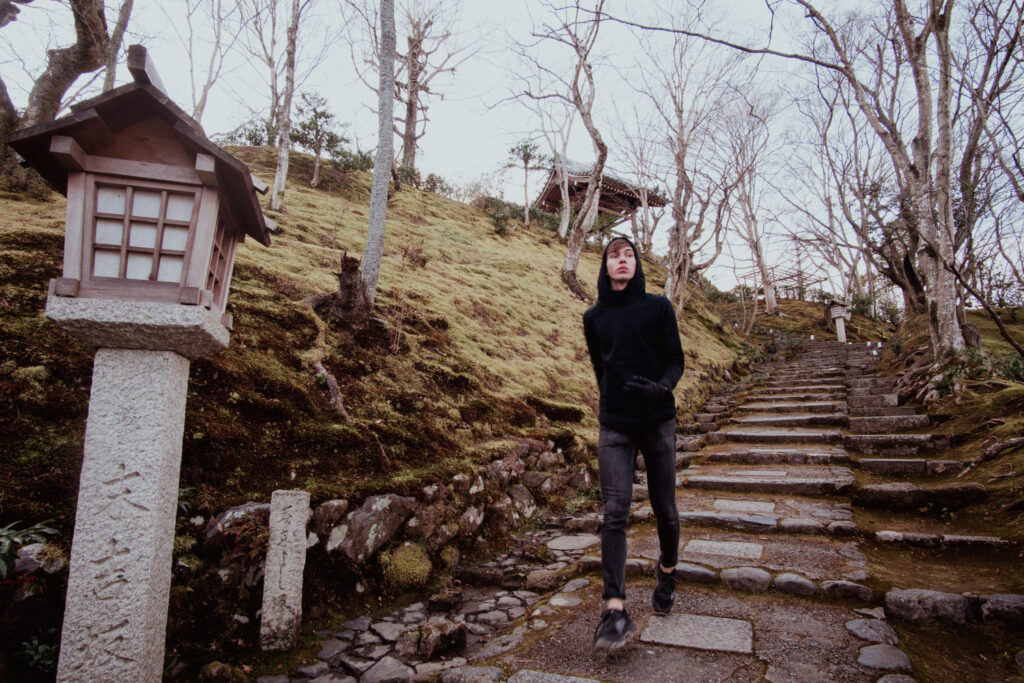
Best Thing to Do: Get Lost in Arashiyama
Chances are you have heard of Arashiyama and its famed Bamboo Forest. Along with the Fushimi Inari Taisha and the Hōkan-ji Temple, the Arashiyama Bamboo Forest is a top spot for capturing Instagram photos in Kyoto. The best thing to do in Arashiyama is to skip the bamboo forest and hit some lesser-visited temples and gardens.
Hidden behind the bamboo forest, you will find the Okochi Sanso Garden, the former residence of a Japanese period film star. Touring this property with its maze of carefully manicured gardens is a must-do. At the end of your tour, you can drink a cup of green tea and feel the true peace of Kyoto.
If you really want to escape the crowds, walk 20 minutes from Torokko Arashiyama Station to Daikaku-ji. This high-ranking Buddhist temple was once home to the imperial palace. You should also head to Gio-ji, a charming temple covered in moss, closer to the main hub of Arashiyama. Visiting Arashiyama is unforgettable if you get off the tourist trail and lose yourself in the silence.
Visiting Kyoto? Read 16 Things to Do Alone in Kyoto | Kyoto Solo Trip Guide
How to Access

Along with Tokyo, Kyoto is probably the most desirable place to visit in Japan. If you want to visit Tokyo and Kyoto, you should purchase the JR Pass which allows you to travel across the whole country.
Without a rail pass, you will pay nearly 15,000 yen for a one-way trip between the cities. If you purchase a JR Pass and visit Tokyo, Kyoto, and another city like Sendai or Hiroshima during your trip, you should highly consider buying a rail pass. It will be most cost-effective.
Although regional passes are cheaper, like JR West Kansai Wide Area Pass, when you are traveling from Tokyo to Kyoto, you are crossing three different regions. Therefore, you need the JR Pass for the whole country.
The cheapest way to reach Arashiyama is to take the JR San-In Line from Kyoto Station to Saga-Arashiyama Station. From there, you will have to walk about 20 minutes to most temples and gardens.
Where to Stay

A great place to stay in Kyoto on a budget is Backpackers Hostel K’s House Kyoto. It has a spacious kitchen, an outdoor terrace, and a large common room. If you want a good workout, you can rent a bike from the hostel for 1,000 yen a day and bike 7 miles to Arashiyama.
Wakayama
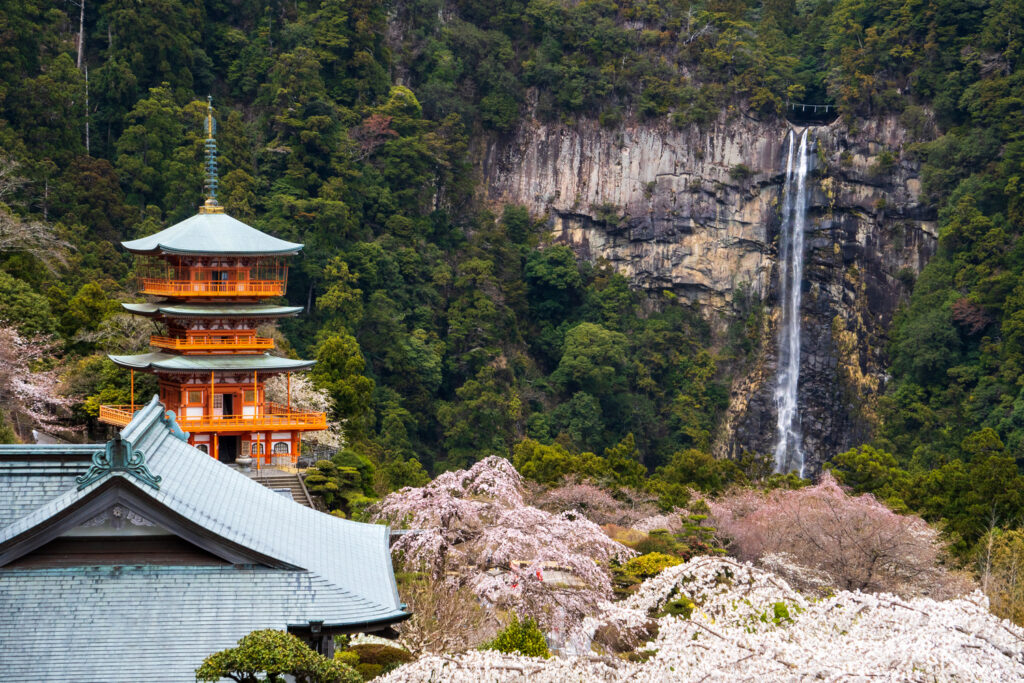
Best Thing to Do: Trek to the Heavenly Nachi Falls
Wakayama Prefecture is south of popular foreign tourist areas in Osaka, Kyoto, and Nara. Still, many Japanese locals visit the Kumano Kodo, a series of century-old pilgrimage routes, in Wakayama. These ancient trails are spread across Japan’s largest peninsula. They are one of only two pilgrimage World Heritage Sites in the world.
Over a century ago, the Japanese imperial court made a month-long journey from Kyoto to reach Kumano in search of heaven on earth. You can also search for heaven on earth via the seven routes that make up Kumano Kodo.
The most popular way to visit Kumano Kodo is to visit Nachi Falls, Japan’s tallest waterfall, and Nachisan Seiganto-ji Temple, the oldest structure in Kumano. Capturing this temple’s famous 3-storied pagoda with Nachi Falls in the background is one of the most iconic shots you can get while hiking in Japan.
How to Access

Start in Osaka and take a 4-hour train ride on the Kuroshio 21 Limited Express Shingu to Kii-Katsuura Station. This route is covered by JR Kansai Wide Area Pass, which costs 12,000 yen. A round trip from Osaka to Kii-Katsuura is 14,920 yen. So, you will save money after one day of travel if you purchase the rail pass. The Kansai Wide Area Pass is valid for 5 days and can take you to many other highly visited spots in Japan, like Nara and Kyoto.
From Kii-Katsuura Station, take a bus to Daimonzaka Bus Stop (about 600 yen one-way). After you get off the bus at the Daimonzaka stop, you can reach Nachi Falls and then the Seiganto-ji Temple in 2.5 miles via a stone path lined with Cedar trees.
Where to Stay

Osaka is one of the most exciting cities in Japan and a good place to stay when visiting Wakayama. It is on everyone’s Japan bucket list. When I visited Osaka, I stayed at Hostel OGK, only a 10-minute walk from Osaka Station. This quiet hostel offers plenty of privacy because of its capsule-style beds.
Nara

Best Thing to Do: Tour Todai-ji
Nara is known for its friendly deer that roam freely in Nara Park. Getting followed and stalked by these docile mammals is fun and makes for hilarious videos, but touring Todai-ji is the true highlight when visiting Nara.
Todai-ji is one of the grandest temples in Japan, and that is reflected in its history. Over one thousand years ago, the temple grew so powerful that the capital moved from Nara to lessen the influence the temple had on the government.
A highlight of visiting Todai-ji is entering the main hall that holds one of Japan’s largest Buddha statues. To get the most out of your trip to Todai-ji, first visit the Todai-ji Museum and learn more about the history of Buddhism in Japan. Then, make your way to the main hall with your camera in hand.
How to Access

Nara is one of the most popular side trips to take when visiting Kyoto. From Kyoto Station, take the Local Nara to Nara Station. This route is covered on the JR Kansai Wide Area Pass. Then, take a bus to Todaiji Daibutsuden.
Where to Stay

A perfect place to stay in Nara on a budget is the Yuzen Guesthouse. It is a Japanese-style home with charm and character. It has a beautiful common room and a quaint kitchen. You can also rent a bike here to access the deer park in minutes.
Osaka
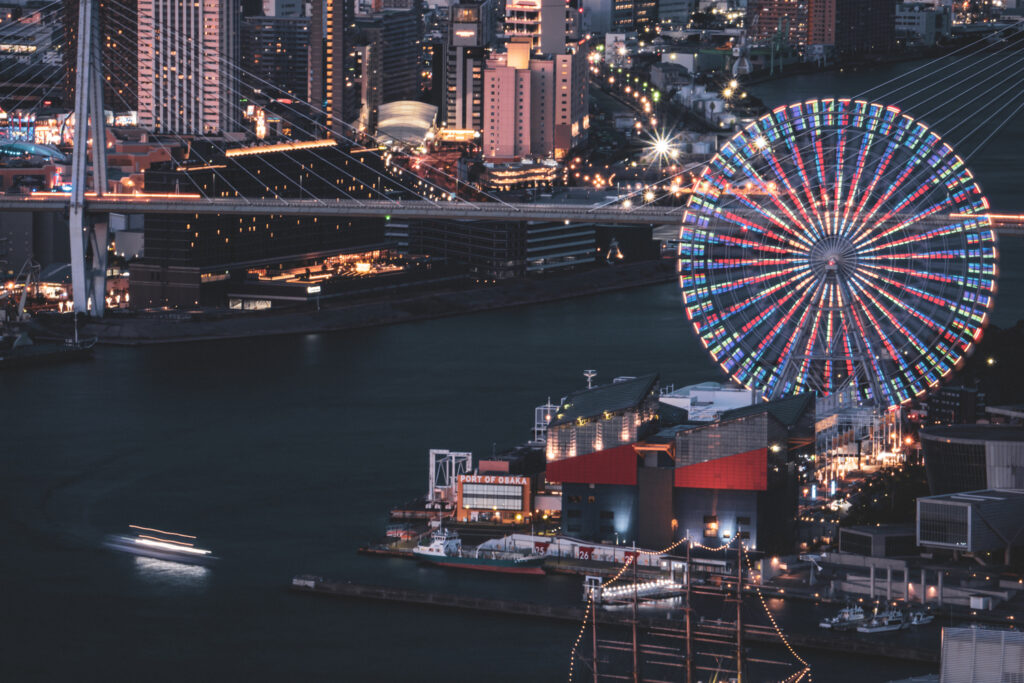
Best Thing to Do: Watch the Sunset at Cosmo Tower
When I visited Osaka, I purchased the Osaka Amazing Pass. It allowed me to get unlimited subway rides and free entry to over 40 popular Osaka tourist sites. I took a riverboat tour in Dotonbori, went to the top of Osaka Castle, and rode the Hep Five Ferris Wheel. I enjoyed those activities, but nothing compared to visiting the Sakishima Cosmo Tower Observatory.
Cosmo Tower sits right on Osaka Bay, making it a perfect spot for sunset. On one side, you can watch boats dock under golden light; on the other, you can watch the city lights illuminate the sprawling urban landscape. From the Cosmo Tower’s 55th-floor observatory, you will also enjoy views of the Akashi Kaikyo Bridge and Kansai International Airport.
When compared to Tsutenkaku Tower and the Umeda Sky Building, other popular observatories in Osaka, the Sakishima Cosmo Tower is the clear winner. Cosmo Tower is not as sleek and fancy as Umeda or in a lively district like Tsutenkaku, but the view is the best. You might also be lucky like I was and nearly have the entire observatory to yourself.
How to Access

If you are starting at Osaka Station or Tennoji Station, you will take the Osaka Loop Line to Bentencho Station. Then, transfer to the Chuo Line to Cosmosquare Station and walk 10 minutes to the Osaka Prefectural Government Sakishima Building Observatory.
The cost of this ride is 410 yen. If you plan to visit the Cosmo Tower along with other tourist sites in Osaka, purchase the Osaka Amazing Pass, and then you can visit the Cosmo Tower and ride the subway for free.
Where to Stay

Osaka is one of the most exciting cities in Japan and is known for its delicious street food. When I visited Osaka, I stayed at Hostel OGK, only a 10-minute walk from Osaka Station. This quiet hostel offers plenty of privacy because of its capsule-style beds.
Hyogo
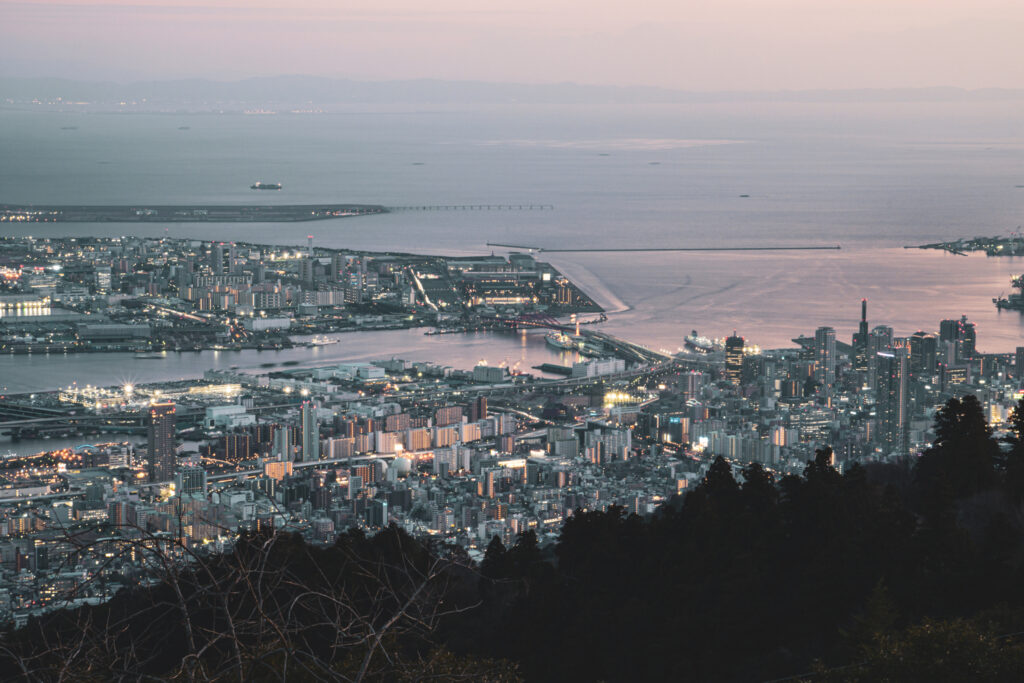
Best Thing to Do: Experience A Legendary Night View
Kobe is the largest city in Hyogo and is known by locals and foreigners as one of the most attractive cities in Japan. In 1995, Kobe was hit by a destructive earthquake, but now there is little evidence that the port city was ever at the epicenter of much destruction.
This capital city is home to a picturesque port, a lively Chinatown, and a historic shrine. However, the best part about this ultra-modern city is that you can hike from the city center to an incredible night view, Kikuseidai, one of the country’s three top night views.
The 3.6-mile trail starts at Shin-Kobe Station and leads you to Nunobiki Falls before a steep climb up to Mt. Maya, where you will find the iconic night view. I recommend hiking the trail in the late afternoon to reach the summit around sunset. Once you watch the bay light up amid the darkness, you can take the Maya Ropeway and Maya Cable Car back down the mountain to Hoshi no Eki Station for 900 yen.
How to Access
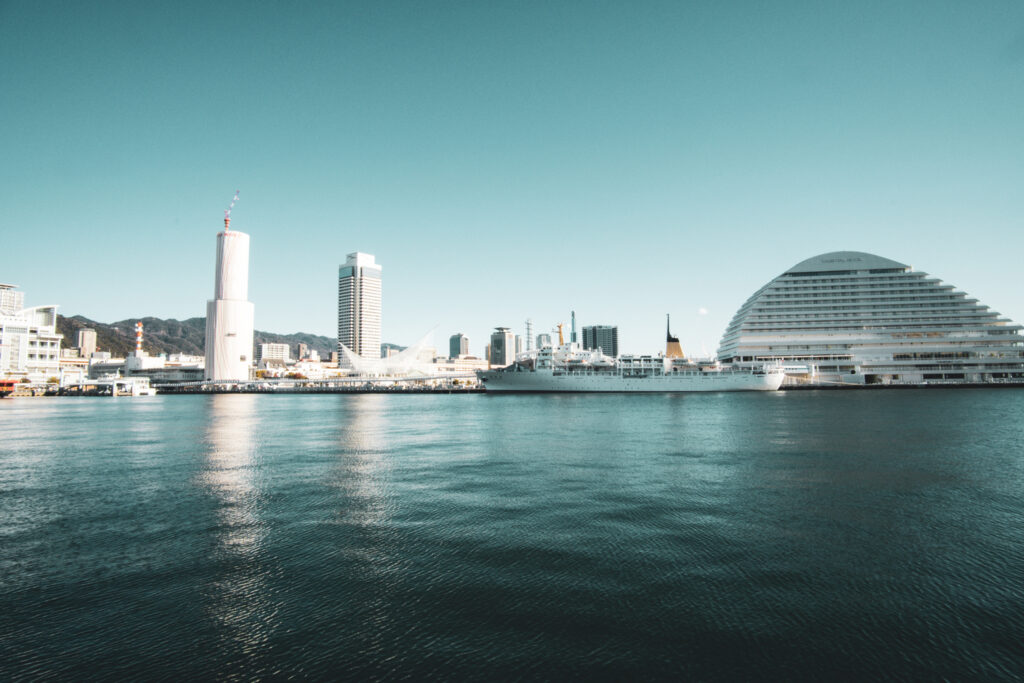
I visited Hyogo during a trip from Osaka using the JR Kansai Wide Area Pass. If you have the Kansai Wide Area Pass, take a quick 20-minute ride on Tokaido Sanyo Shinkansen from Shin-Osaka Station to Shin-Kobe Station.
If you do not purchase the pass, do not take the Shinkansen because it will be nearly 3,000 yen more than the local train. Instead, take the Kobe Line to Kobe-Sannomiya Station from Osaka-Umeda Station. Then, transfer to the Seishin-Yamate Line to Shin-Kobe Station.
Where to Stay

Osaka is less than 20 minutes by bullet train and less than an hour by local train from Kobe, so Osaka is a great place to stay if you want to visit Kobe. When I visited Osaka, I stayed at Hostel OGK, only a 10-minute walk from Osaka Station. This quiet hostel offers plenty of privacy because of its capsule-style beds.
Chugoku Region
International tourists flock to Chugoku to visit Hiroshima’s memorials, but most of them just stop there. Little do they know, they are missing out on climbing massive sand dunes and touring an expansive limestone cave.
Okayama

Best Thing to Do: See an Illuminated Garden
Okayama is most known for the Okayama Castle, a reconstructed black castle, and the accompanying Korakuen Garden, one of Japan’s three most impressive landscape gardens.
Although the Okayama Castle and Korakuen are stunning any time of the year, they are really worth visiting during Genso-Teien. During this seasonal event, the Korakuen lights up with intricate art displays. You can tour the garden at night to see an explosion of colors highlighting bamboo groves.
The illuminated garden event is held in the spring, summer, and fall. Visit the Korakuen’s official website for exact illumination dates, and then you can decide for yourself if the garden is more beautiful in the daytime or under moonlight.
How to Access

You can walk 25 minutes to Korakuen from Okayama Station. You can also take a tram on the Higashiyama Line to the Shiroshita stop. From there, the garden is 10 minutes away on foot. There is also a direct bus to the garden from the station.
Okayama can be a great side trip from Osaka or Kyoto. I used the JR Kansai Wide Area Pass to visit Okayama during my trip from Kyoto. To reach Okayama, take the Tokaido-Sanyo Shinkansen, covered by the JR Kansai Wide Area Pass.
A regular round-trip ticket to Okayama from Osaka would be over 13,000 yen, which is more expensive than the 12,000 yen JR Kansai Wide Area Pass.
Where to Stay

Osaka is one of the most exciting cities in Japan and is known for its delicious street food. It would be a convenient place to stay when visiting Okayama. When I visited Osaka, I stayed at Hostel OGK, only a 10-minute walk from Osaka Station. This quiet hostel offers plenty of privacy because of its capsule-style beds.
Hiroshima

Best Thing to Do: Cycle the Shimanami Kaido
Hiroshima’s identity is attached to its Peace Memorial Park, a large memorial dedicated to the victims of the first atomic bombing. Visiting this park and the infamous Atomic Bomb Dome is unforgettable, but nothing is more rewarding than cycling across the 70 km (43 miles) Shimanami Kaido.
The Shimanami Kaido is a cycling route across 6 small islands in the Seto Inland Sea. It is the only way you can bike from Japan’s main island of Honshu to the island of Shikoku. The journey is difficult, but one of the most scenic bike rides in the country and perhaps the world.
You will cycle across some of the most stunning beaches in the Setonaikai National Park. You can stop on Ikeuchi Island and visit the famous Kosanji Temple and the Hill of Hope, or take a detour on Hakata Island to climb Hiraki mountain. It is impressive to bike the entire route, but make sure to take a few detours along the way.
How to Access

The Shimanami Kaido starts in either Onomichi, Hiroshima, or Imabari, Ehime. It is easiest to take a train to Onomichi from Hiroshima and then take a bus back from Imabari after completing the cycle route.
Take the Tokaido-Sanyo Shinkansen bound for Osaka to Fukuyama Station from Hiroshima Station. It might be most cost-effective to purchase a JR Pass, especially if you want to make more long-distance trips to cities like Sendai or Fukuoka.
From Fukuyama Station, transfer to the San-yo Line to Onomichi. You can rent a bike at the Onomichi Port, only a few minutes away from the Onomichi Station. After you finish the biking course, take a bus back to Onomichi from the Imabari Station.
Where to Stay
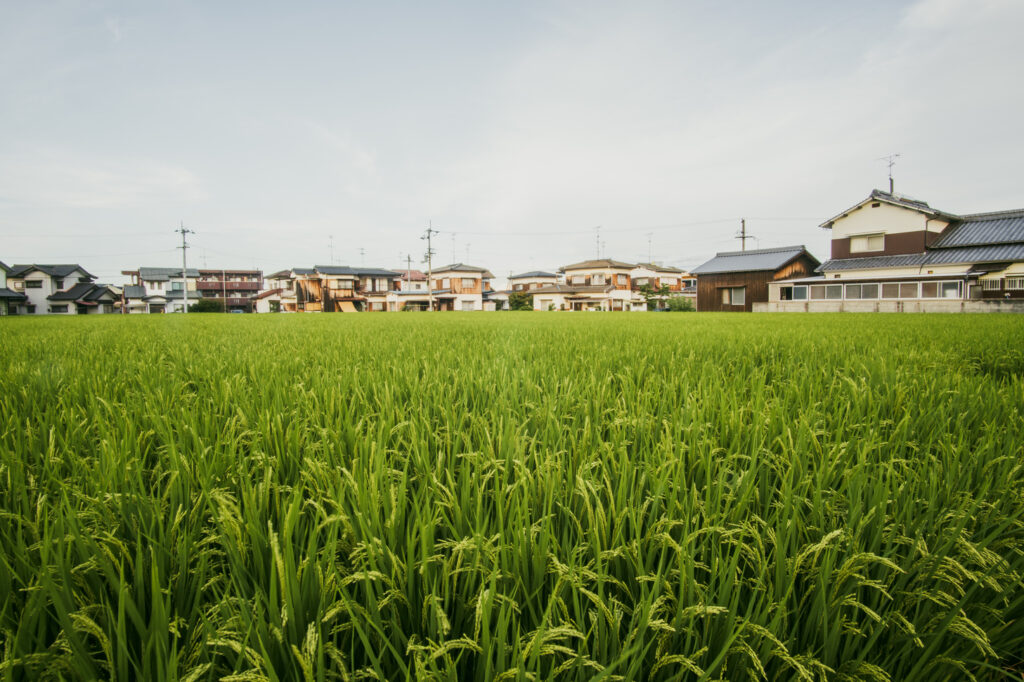
Hiroshima is about an hour away from Onomichi. You can stay at Guest House Hiroshima Mange Tak in Hiroshima. It has excellent reviews and is a good place to make friends.
Yamaguchi

Best Thing to Do: Tour Akiyoshido Cave
In the heart of the Yamaguchi Prefecture, you will find Akiyoshido Cave, one of Japan’s largest limestone caves. Japan’s summers are extremely humid and not ideal for sightseeing. Luckily, once you step into Akiyoshido Cave, you are greeted with a cooling breeze that makes touring the cave enjoyable year-round.
Give yourself plenty of time to tour the cave. The walking course itself is short, less than a mile. However, there are numerous stations where you can play audio tracks in English that explain how the stalagmites were formed. In addition to hiking in the cave, there are hiking trails above the cave around the Akiyoshidai Plateau.
The best way to experience the cave is to enter from the Akiyoshido Entrance and walk the entire cave to the Kurotani Entrance. Turn back and take the elevator up to an observation deck that overlooks the rocky plateau above the cave. Then, re-enter the cave, taking the same elevator down and walking back to the Akiyoshido Entrance.
How to Access

Since the cave is located in a remote section of Yamaguchi, you will need to take a bus to reach it. You can start at Shin-Yamaguchi Station and take the Bocho Bus to the cave for 1,170 yen. However, if you purchased the JR Pass, you should take the bus from Yamaguchi Station to the cave because the JR Pass covers those buses.
Shin-Yamaguchi Station can be reached via the Tokaido-Sanyo Shinkansen from Hiroshima or Osaka using the JR Pass. To reach Yamaguchi Station from Shin-Yamaguchi Station, you will need to take a 20-minute ride on the JR Yamaguchi Line.
Where to Stay

You can stay at a Kaikatsu Club in Yamaguchi. First time staying at a Kaikatsu Club? Click here. You can also stay at the Comfort Hotel in Shin-Yamaguchi, which offers free breakfast. However, most people take a day trip to Yamaguchi and stay in the more lively Hiroshima. You can stay at Guest House Hiroshima Mange Tak in Hiroshima. It has excellent reviews and is a good place to make friends.
Tottori

Best Thing to Do: Climb the Sand Dunes
A quick bus ride from Tottori’s city center, you will encounter a large area of dunes. These natural dunes are a part of the Saninkaigan National Park. When you visit the Tottori Dunes, you feel transported to the Sahara Desert.
Most tourists do not make the long journey to Tottori Dunes, and even many Japanese do not as well. However, it is quite amazing if you make it to Tottori, Japan’s least-populated prefecture.
Sand will crash into your skin and fill every inch of your shoes. However, the views from the top of the dunes are legendary. You will be so grateful you got off the beaten path and saw a new side of Japan.
How to Access

It is expensive to travel to Tottori, but it is a great trip if you have the JR West Kansai Wide Area Pass. This pass is valid for 5 days, so you can easily hit Tottori during a trip to Kyoto or Osaka.
The fastest way to reach Tottori is to take the Limited Express Super Inaba from Okayama Station, which costs 4,900 yen. So, a round-trip to Tottori would cost nearly the same as the JR West Kansai Wide Area Pass.
Once you make it to Tottori Station, get on the bus bound for Tottori Sakyu and get off at the final stop.
Where to Stay

Since Tottori is somewhat difficult to reach, it is best to stay a night in Tottori and wake up early to reach the dunes before it gets too hot. It is very convenient to stay at the APA Hotel near Tottori Station, where you can take the bus to the Tottori Dunes.
If you are feeling extra cheap, there are internet cafes in Tottori. First time staying at an internet cafe? Click here.
Shimane
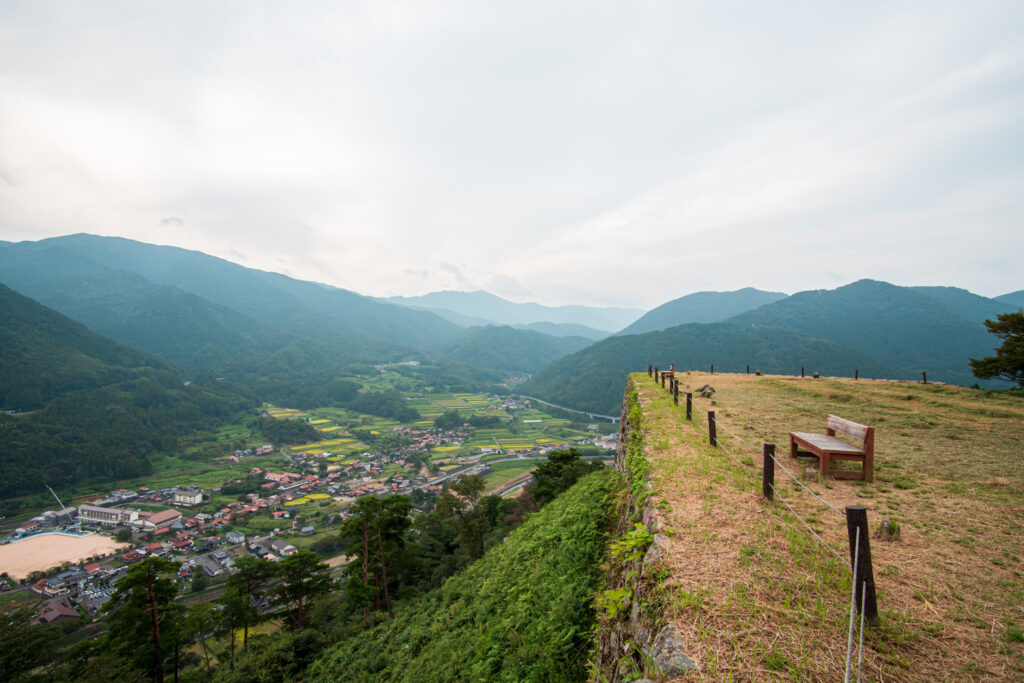
Best Thing to Do: Step Back in Time in Tsuwano
Near the border of Shimane and Yamaguchi, you will find one of the most unspoiled towns in the entire country, Tsuwano. This castle town is known as a “Little Kyoto,” but its empty streets and lack of commercialization argue that it is much more distinct. It should be on your Japan bucket list.
Tsuwano is a place where Japanese rituals are preserved. It is the only location in the country where the culturally significant Heron Dance has been practiced for over 400 years. Also, Tsuwano is home to the 800-year-old horseback archery festival, Yabusame.
If you visit Tsuwano, start at the Tsuwano Japan Heritage Centre, where English guides will showcase historic paintings and offer you coupons for attractions around the city. After visiting the museum, walk a mile to Taikodani Inari-jinja Shrine, one of the most impressive Inari shrines in the country. From the shrine, you can take a trail up to the Tsuwano Castle Ruins with sweeping views of the city.
How to Access
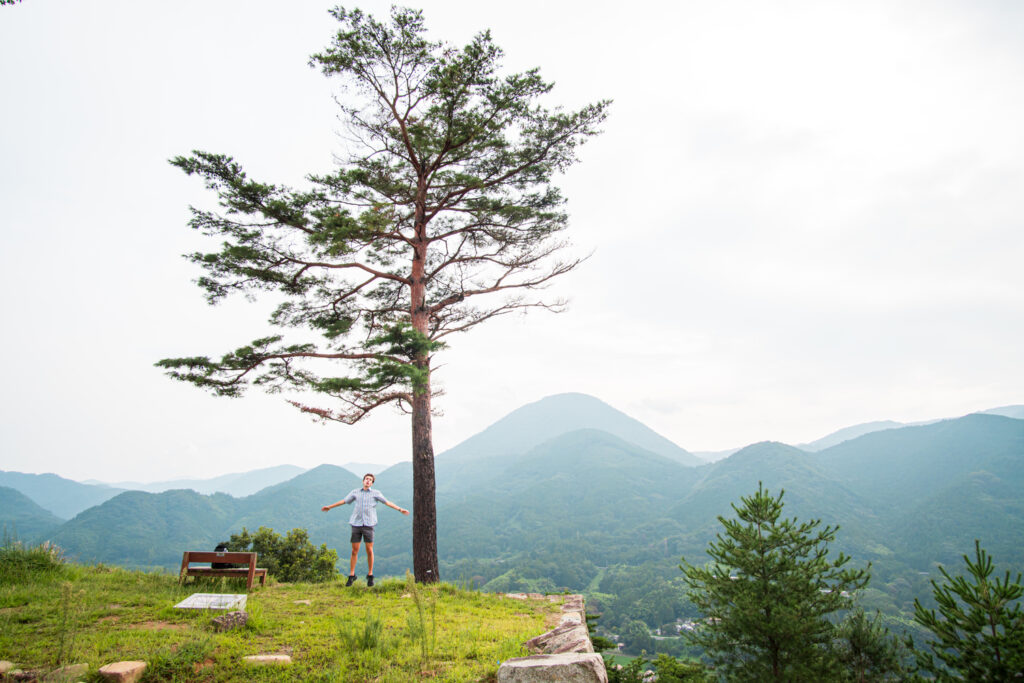
It is easiest to reach Tsuwano from Shin-Yamaguchi Station. Take the Local Masuda on the Yamaguchi Line to Tsuwano Station. This trip only costs 1,170 yen. Shin-Yamaguchi Station can be reached via the Tokaido-Sanyo Shinkansen from Hiroshima or Osaka using the JR Pass.
Where to Stay

Tsuwano is a very small city with few cheap places to stay. You can stay at a Kaikatsu Club in Yamaguchi or stay at the Comfort Hotel in Shin-Yamaguchi, which offers free breakfast. First time staying at a Kaikatsu Club? Click here.
Shikoku Region
The smallest of the four main islands of Japan, Shikoku is known for unbeatable seafood and for getting off the beaten path. If you want to cross a historic vine bridge and unwind on a ferry ride, cross the Seto Inland Sea to Shikoku. Use the Shikoku Rail Pass to visit all four prefectures in Shikoku.
Kochi

Best Thing to Do: Eat Katsuo no Tataki
Kochi is far from the tourist trail. It is the southernmost prefecture of Shikoku. However, there is a good reason to make the trip to Kochi. It is not to visit its historic castle or sacred mountain, but to eat delicious local cuisine.
Katsuo no Tataki, a lightly broiled tuna dish, is popular in Shikoku and Japan. It is the unofficial symbol of Kochi. If you are a fan of seafood, you must eat these salty tuna slices. You can find Katsuo no tataki at local restaurants throughout Kochi, but head to the somewhat chaotic Hirome Market, the city’s premier spot for Katsuo no tataki.
Entering the market is truly a cultural experience. You will walk through souvenir shops and food stalls to get to the back corner of the market. At the back of the indoor market, you will find a long line in front of the most famous Katsuo no tataki shop.
How to Access

From Kochi Station, you can walk 20 minutes to Hirome Market. Buses can also drop you off near the market for 200 yen. You can reach Kochi by train using the Shikoku Rail Pass from Tokushima or Takamatsu. However, the cheapest way to travel in Shikoku is by highway bus.
Where to Stay

You could easily spend a night or two in Kochi. Katsuo Guest House is located near Kochi Station, and its dormitory rooms feature traditional Japanese bedding.
Ehime

Best Thing to Do: Take a Ferry to Matsuyama
Ehime is home to the Matsuyama-jō Castle, a restored castle on a cliff, and Dogo Onsen, one of the oldest onsen baths in the country. However, I will never forget the journey crossing the Seto Inland Sea to get to the prefecture.
I took a 2 ½ hour ferry from Hiroshima Port to Matsuyama Kanko Port during sunset, and it was one of my favorite experiences in Shikoku. Traveling by the Shinkansen is a popular Japanese tourist activity, and everyone loves praising the country’s impeccable rail system. I love traveling by train, but traveling by ferry might be even more enjoyable.
During the trip from Hiroshima to Matsuyama, you can sit comfortably on the ferry deck and enjoy views of the changing coastline and intimidating shipyards. There is something magical about riding a ferry in Japan and seeing the country while sailing across the water.
How to Access

You should take the ferry from Hiroshima Port to Matsuyama Kanko Port if you want to travel to more prefectures in Shikoku. Matsuyama is an excellent place to start if you want to reach Kagawa or Kochi. Once you arrive in Matsuyama, you can use the Shikoku Rail Pass to get unlimited train rides to travel across the island.
To reach the Hiroshima Port from Hiroshima’s city center, take the streetcar to Hiroshimako Station. Once the ferry arrives at Matsuyama Kanko Port, you will need to take a bus or walk 10 minutes to Takahama Station. From there, take the Local Yokogawara to Matsuyama City Station.
The ferry trip from Hiroshima to Matsuyama costs 4,500 yen one way. However, until March 31, 2024, overseas visitors can get 30 percent off a ticket if they show their passport. So, traveling on this ferry is one of the cheapest ways to get from Honshu to Shikoku.
Where to Stay

Matsuyama is the largest city in Shikoku, so it is one of the island’s cheapest and most exciting places to stay. Stay at Cinnamon, a charming guesthouse close to Dogo Onsen.
Kagawa
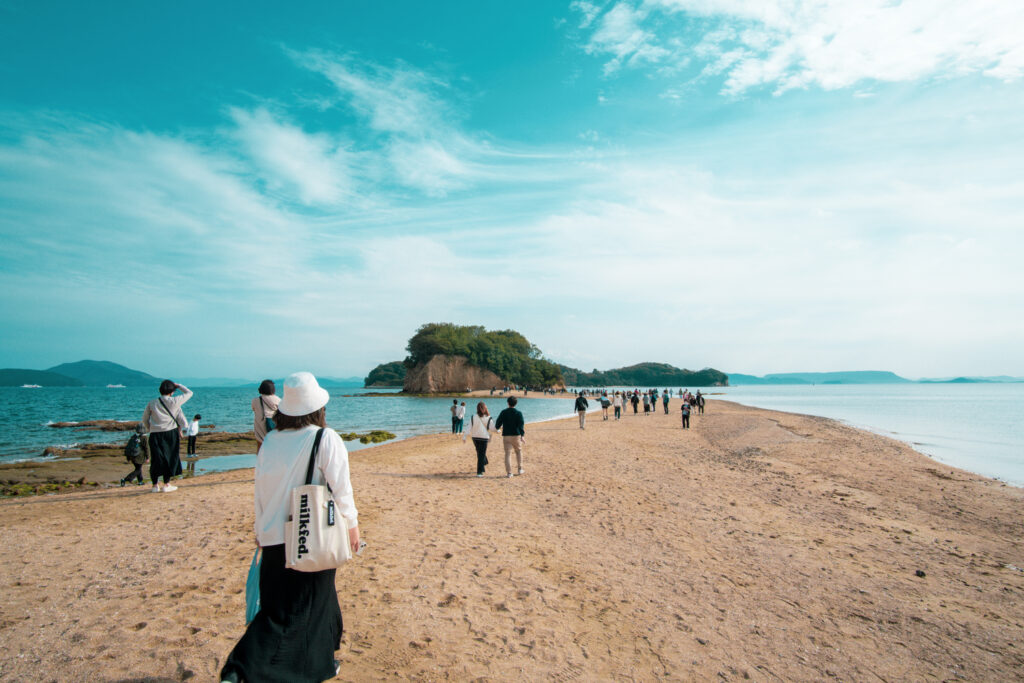
Best Thing to Do: Cycle in Shodoshima
Kagawa is Japan’s smallest prefecture by area. However, it is home to the second-largest island in the Seto Inland Sea, Shodoshima. This island, situated halfway between Japan’s main Island of Honshu and the smaller island of Shikoku, is known as the Mediterranean of Japan due to its olive production and warm climate.
Shodoshima is home to many enchanting sights. From the Kankaei Gorge, one of the three most impressive gorges in the country, to Angel Road, a sandbar connecting Shodoshima to a series of small islands, there is so much natural beauty on the island. One of the most popular tourist activities in Shodoshima is taking a photo in front of the famous windmill shown in the Studio Ghibli movie “Kiki’s Delivery Service.”
The best way to enjoy the island’s beauty is to rent an e-bike once you arrive from Tonosho Port. You will find a bike station near the port operated by Hello Cycling. Before your trip, download the Hello Cycling App and add a payment method. Once you arrive on the island, you can unlock a bike by using your phone.
How to Access

To reach Shodoshima, you can take a ferry from Himeji, Hinase, Okayama, and Takamatsu. The cheapest way to get to Shodoshima is to take the car ferry (700 yen) from Takamatsu, Kagawa, to Shodoshima’s Tonosho Port. There is also a high-speed ferry that leaves from Takamatsu. It only takes 30 minutes, half the time as the car ferry, but costs 1,190 yen.
To reach Takamatsu from Osaka or Kyoto, utilize JR West Kansai Wide Area—a one-way trip from Kyoto to Takamatsu costs 9,400 yen. The JR West Kansai Wide Area provides 5 days of unlimited train rides in the Kansai Region for 12,000 yen.
Where to Stay

Takamatsu is a major port city in Kagawa, less than an hour from Shodoshima, so it is a convenient place to stay if you want to visit the Mediterranean of Japan.
You can stay at TEN to SEN Guesthouse Takamatsu, a high-rated hostel near Ritsurin Garden, a large traditional Japanese garden in the center of Takamatsu.
Tokushima
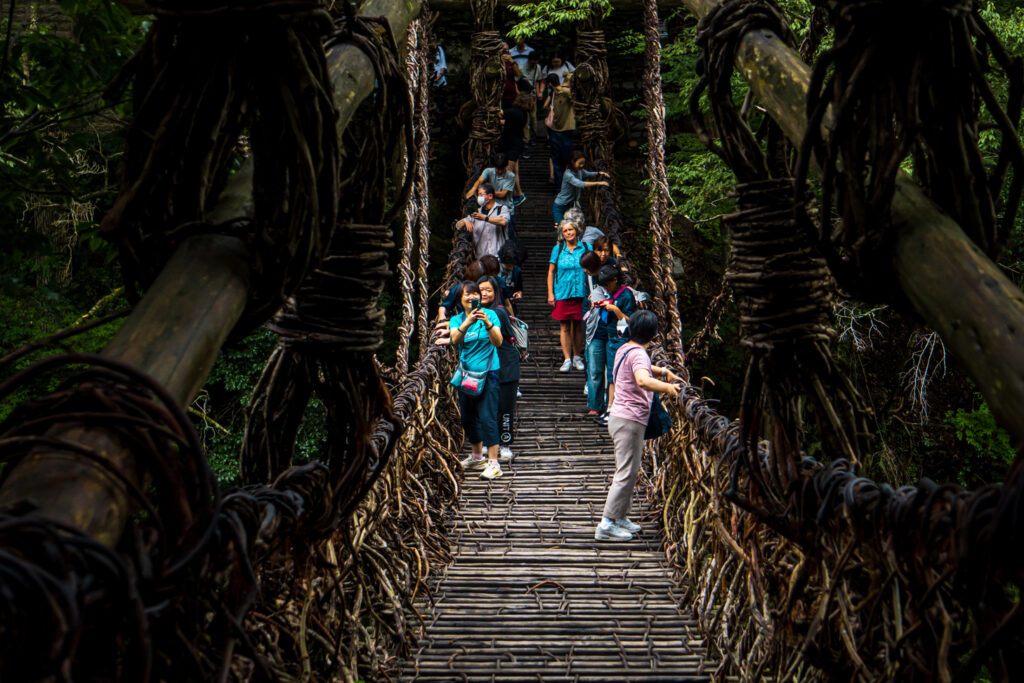
Best Thing to Do: Cross a Rope Bridge
One of the most scenic spots on Shikoku is the Iya Valley, a remote mountainous area with dramatic valleys carved by roaring rivers. Before the modernization of Japan, the Iya Valley was home to warring clans who could hide among the lush terrain.
These clans designed intricate vine bridges to cross the rivers in the region. These bridges could be cut down quickly if any enemy were approaching, since they were made of braided vines. Today, if you want an adrenaline boost, you can cross these bridges like warriors once did.
There are three remaining vine bridges you can walk across. The most accessible vine bridge in Iya Valley to reach is the Iya Kazurabashi Bridge. Pay 550 yen and carefully step to the other side of the bridge without paying much attention to the gaps in the bridge. If you have a fear of heights, you can eat French toast at this cozy cafe and watch tourists cross the vine bridge with care.
How to Access

The quickest way to access the Iya Kazurabashi Bridge is to take the Dosan Line-Limited Express from Takamatsu Station to Oboke Station, which the Shikoku Rail Pass covers. You can also reach Oboke Station from Kochi Station by taking the Dosan Line.
Once you reach Oboke Station, take a local bus to the Kazurabashi bus stop for 670 yen. You can then walk 5 minutes to the Iya Kazurabashi Bridge.
Where to Stay

Takamatsu is a major port city in Kagawa, about 2 hours from the Iya Kazurabashi Bridge. You can stay at TEN to SEN Guesthouse in Takamatsu—a high-rated hostel near Ritsurin Garden, a large traditional Japanese garden.
Kyushu Region
Kyushu is the southernmost of the four main islands of Japan. Since it is closer to the rest of Asia, its cities have a unique culture not found elsewhere in Japan. The region is home to arguably the most active volcano in Japan and unbeatable hot springs. You can use the Kyushu Rail Pass if you want to get around Kyushu easily. However, if you have extra time and want to save money, use the Kyushu SunQ Pass for unlimited bus rides around the island.
Fukuoka

Best Thing to Do: Hit Up Momochi Seaside Park
Fukuoka is one of the most tourist-centered cities in Kyushu. With Ohori Park, famous for cherry blossoms, and Canal City Hakata, a picturesque shopping complex, it can be hard to identify the best thing to do in this city, known for ramen and food stalls.
My favorite place in the city is Momochi Seaside Park. It is an artificial beach, not far from the city center. Although it is a relaxing place to take a stroll, the highlight of the beach park is seeing Fukuoka Tower from the sandy shore.
The tower is the largest seaside tower in Japan and is a symbol of Fukuoka. My favorite view of the tower is when it lights up at night. It reflects blue light onto the scenic coastline and makes for an unforgettable photograph.
How to Access

You can take buses from Hakata Station or Tenjin Station to reach Fukuoka Tower. From the bus stop, it is a short walk to the sandy beach park. You can also walk 20 minutes from the Nishijin Subway Station.
If you want to reach Fukuoka from Honshu, Japan’s main Island, you can use the JR Pass that covers all of Japan and take the Kyushu Shinkansen to Hakata Station. However, it might be cheaper to fly to Fukuoka.
Where to Stay

When I visited Fukuoka, I stayed at UNPLAN Fukuoka, an excellent place for travelers who want the “local experience.” Walk 10 minutes from the hostel to a famous ramen shop, Ganso Ramen Nagahamake, and eat Hakata ramen elbow-to-elbow with locals.
Saga

Best Thing to Do: Visit a Mountain Rich in Mythology
Saga is a small prefecture sandwiched between two of Kyushu’s major players, Fukuoka and Nagasaki. Although Saga is often overlooked, visiting Karatsu, a coastal castle city in the area, is a great day trip from Fukuoka. It should be on your Japan bucket list.
The highlight of a trip to Karatsu is reaching the top of Mt. Kagamiyama. This mountain offers stunning views of Niji No Matsubara Pine Grove, a massive grouping of pine trees that were planted as a natural sea barrier. Now, the pine grove is known as one of the three major pine groves in the country.
This mountain is known as the “shawl-waving mountain” because records say a princess waved her shawl to her lover on top of the mountain while he was leaving Japan and crossing the sea towards Korea. She is said to have died in “Snake Pond,” a small body of water near the top of Kagamiyama. However, some argue that she turned into a stone after chasing her lover’s ship.
How to Access

Karatsu can be easily reached from Fukuoka. Take the Airport Line to Nishi Karatsu, then continue on the Chikuhi Line to Nijino Matsubara Station. This trip is covered by the Kyushu Rail Pass.
There is a trail up to Mt. Kagamiyama, but the trailhead is far from the train station. So, I just walked up the 2-mile road leading to the observation deck. However, taking a taxi to Mt. Kagamiyama is more convenient. There are no buses that come to the top of the mountain.
Where to Stay

Fukuoka is less than 2 hours from Karatsu and one of the most popular cities to visit in Kyushu. When I visited Fukuoka, I stayed at UNPLAN Fukuoka, an excellent place for travelers who want the “local experience.”
The hostel is steps from Ohori Park and the Fukuoka Castle ruins. It is also right on the subway line to the airport.
Nagasaki
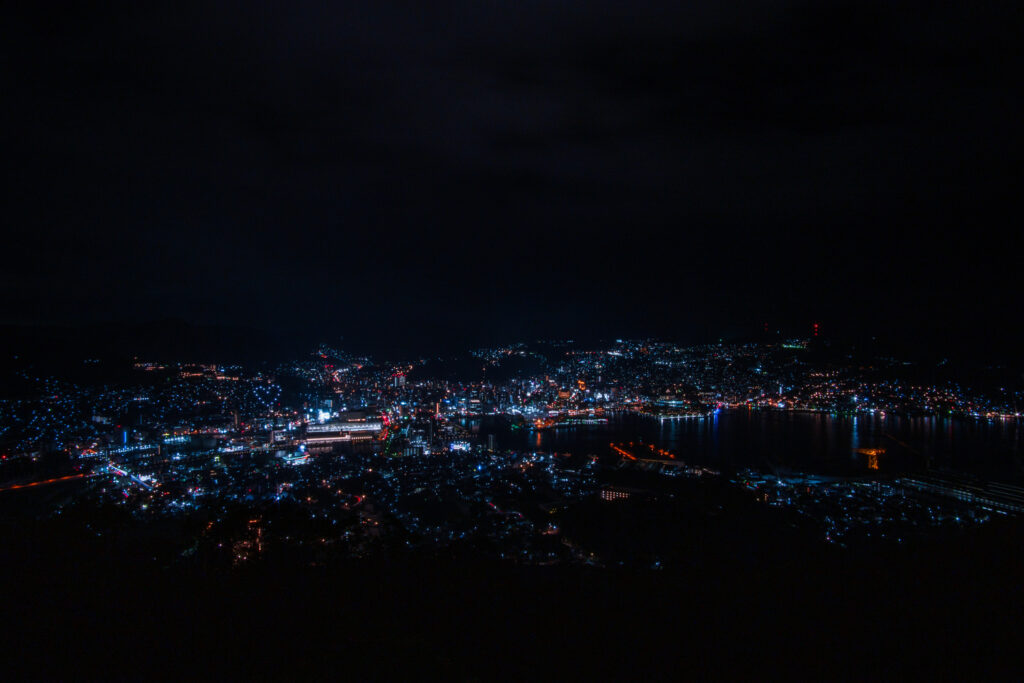
Best Thing to Do: Visit Mt. Inasayama at Night
Nagasaki is most associated with the atomic bombing, but today, the city is much more than a sight of former destruction. It is a port city brewing with cultural influence and historic mansions. It is also home to one of Japan’s three most famous night views.
Head up to the Mt. Inasayama Observatory for a dramatic view of the dynamic city. Mount Inasayama sits directly above Nagasaki, and you can reach the observatory by ropeway or bus. The latter is the cheapest option.
Remembering the city’s haunting past makes this night view even more remarkable. Somehow, Nagasaki has rebuilt itself to be even brighter and bolder than before the infamous bombing. You should add visiting Nagasaki to your Japan bucket list.
How to Access

You can use the Kyushu Rail Pass to access Nagasaki from Fukuoka or Kumamoto. However, the cheapest way to reach Nagasaki is by highway bus from either city. If you plan to use highway buses to travel around Kyushu, purchase the Kyushu SunQ Pass.
If you want to reach Nagasaki from Honshu, Japan’s main Island, you can use the JR Pass that covers all of Japan. However, it might be a long journey. From Hiroshima, it takes over 3 hours to reach Nagasaki. From Tokyo, it takes over 7 hours. It might be easier to just fly to Nagasaki.
Where to Stay

The cheapest place to stay in Nagasaki is the Free Space Hamanomachi Store, an internet cafe near Chinatown. If you are unsure about staying in an internet cafe, book the ROUTE – Cafe and Petit Hostel, conveniently located by Nagasaki Station.
Kumamoto
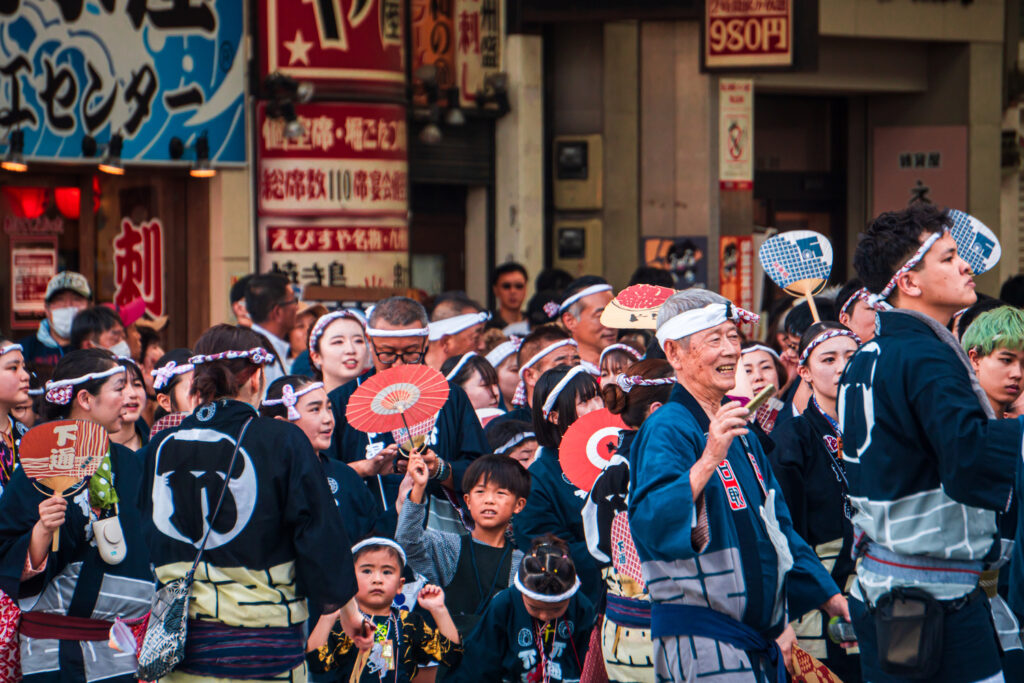
Best Thing to Do: Attend a Summer Festival
One of the most exciting things to do during a trip to Japan is to attend a festival. Seeing a town come alive during a festival is a beautiful way to engage with Japanese culture and to eat delicious street food. Festivals happen year-round, and they are worth planning your trip around.
If you visit Kumamoto during mid-September, you can see a 1,000-year-old tradition where locals carry portable shrines throughout the city. Decorated Horses and locals dressed like samurai also follow the parade route, prompting cheers from the massive crowds that watch the parade.
The festival is known as the Zuibyo Festival and is fascinating to watch. The parade begins around 6 a.m. and can be heard from every corner of the city. If the noise is too much for you, you can escape to Kumamoto Castle or wait in line for shaved ice, a popular summer festival treat.
How to Access

If you have the Kyushu Rail Pass, Kumamoto can be easily reached from Fukuoka or Nagasaki by taking the Kyushu Shinkansen. However, the cheapest way to go to Kumamoto is to take a highway bus from Fukuoka or Nagasaki using the Kyushu SunQ Pass.
With the Kyushu SunQ Pass, you can ride nearly all local and highway buses in Kyushu during a set period. Purchase this pass before your trip to reserve your seats on their online reservation platform.
Where to Stay

Kumamoto is a lively city with a modern flair and many restaurants. You can stay at an internet cafe if you want to save extra money, or you can stay at Minshuku Hiroshimaya, a charming guest house located 1.5 miles from Kumamoto Castle.
Oita

Best Thing to Do: Relax in Beppu
I like to see as many sights as possible when I travel. Although that travel mindset usually rewards me with vivid memories, sometimes it is best to relax and watch life pass by. In Oita, you will find one of Japan’s most famous hot spring towns, Beppu Onsen. This is a great place to contemplate and rest from sightseeing.
No trip to Beppu is complete without bathing in its therapeutic hot spring waters. It is said that Beppu produces the most hot spring water in the entire country. Head to Hyotan Onsen, where you can rent a private outdoor bath with a private sauna. If you want a uniquely Beppu experience, try the sand bath at Hyotan Onsen.
After a calming bath, enjoy excellent seafood at Satonoeki Kanawa, a restaurant only a few minutes from Hyotan Onsen. Here, you can order fish and vegetables steamed from Beppu’s natural flowing hot springs. The food is delicious, and the atmosphere is peaceful.
How to Access

Highway buses run to Beppu from Fukuoka or Nagasaki. To get to Hyotan Onsen, get off at the Kannawaguchi bus stop. When I visited Beppu, I used the Kyushu SunQ Pass to get unlimited rides on local and highway buses in Kyushu for four days. This is the cheapest way to travel around Kyushu.
Where to Stay

Beppu is a small resort city with few budget places to stay. However, you can stay at the new Beppu Hostel U&T, which features a garden and outdoor terrace.
Miyazaki
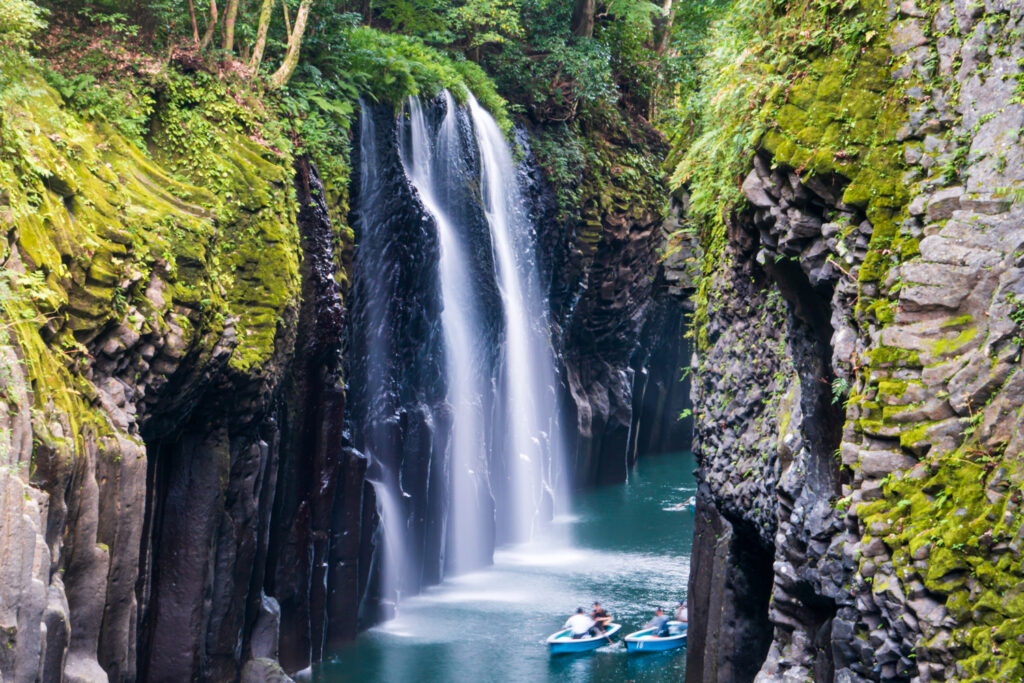
Best Thing to Do: Photograph the Takachiho Gorge
If you want to capture an image of a stunning waterfall emptying into a deep gorge, you must make the trip to Takachiho. This mountain town is full of mythology that adds to the beauty of the scenic landscape. Visiting this scenic gorge should be on your Japan bucket list.
It is said that the sun goddess hid in a cave near the gorge, leading other gods to come and lure her out. At the Takachiho Shrine, you can watch performances recreating this event from Japanese mythology.
You can peer into the gorge from an observation deck or rent an expensive boat (around 4,000 yen) and row down the river. You will need to rent a boat online before your trip. Although the gorge is not a hidden gem, it is one of the most mesmerizing sights in Kyushu and is worth visiting for a day.
How to Access

Although there is a Kyushu Rail Pass, the cheapest way to travel around Kyushu is by highway bus using Kyushu SunQ Pass. Takachiho is far from any train station, and you will need to take a bus to reach the gorge anyway, so purchasing a rail pass is unnecessary if you plan to visit the Takachiho Gorge.
With the Kyushu SunQ Pass, you can ride nearly all local and highway buses in Kyushu during a set period. Purchase this pass before your trip to reserve your seats on their online reservation platform. Certain buses can fill up quickly.
To reach Takachiho Gorge, take a highway bus from Kumamoto’s Sakuramachi Bus Terminal to Miyakoh Bus Center. From the bus center, walk 20 minutes to the gorge. You can reach Kumamoto on highway buses from Nagasaki or Fukuoka.
Where to Stay

Kumamoto is a lively city with a modern touch that is three hours from the remote Takachiho Gorge. In Kumamoto, sleep at an internet cafe to save extra money or stay at Minshuku Hiroshimaya, a charming guest house located 1.5 miles from Kumamoto Castle.
Kagoshima

Best Thing to Do: Explore Sakurajima
After taking a ferry from Kagoshima Port, you can experience Sakurajima, an island home to one of Japan’s most active volcanoes. Depending on when you visit, you might see a giant mushroom cloud of smoke surrounding the top of Sakurajima.
Even if you visit Sakurajima on a “quiet day,” you will have plenty to do. You can visit the free Sakurajima Visitor Center or relax at the Magma Onsen, which has one private bath. Near the ferry terminal, you can walk the Nagisa Lava trail.
However, visiting its observatories is the best activity to do on Sakurajima. Since the volcano is constantly erupting, these observatory decks are the closest you can get to Sakurajima’s boiling peaks. The Yunohira Observation Deck is the easiest to reach by bus from the ferry terminal. However, the less accessible Arimura Lava Observation Deck is my favorite.
How to Access
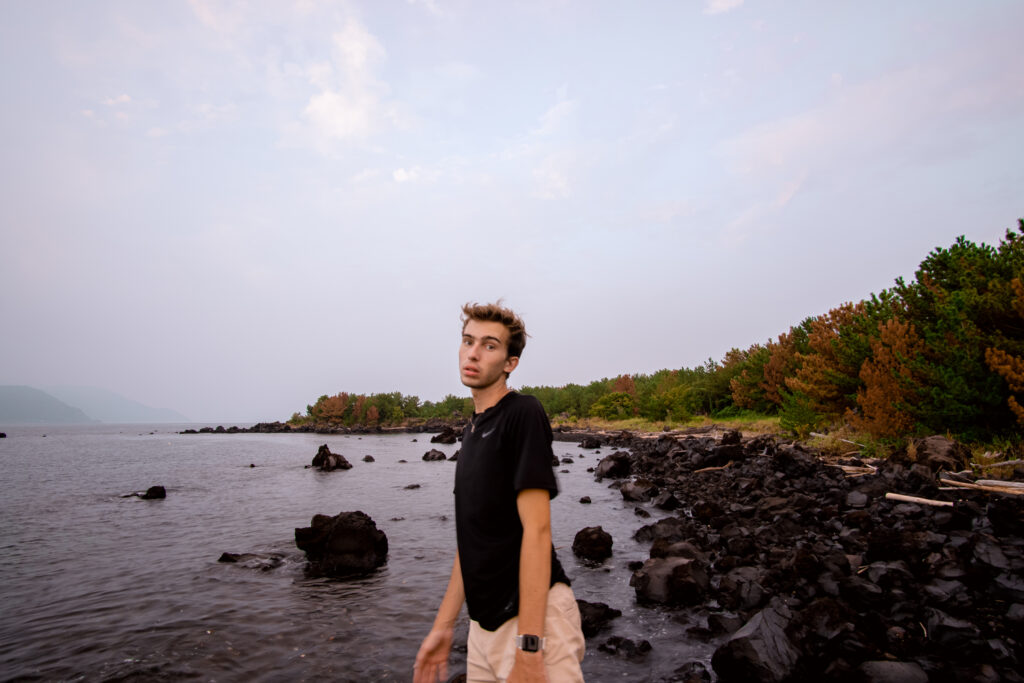
The fastest way to reach Kagoshima is by the Kyushu Shinkansen. A one-way ticket from Fukuoka costs over 10,000 yen, so consider purchasing the Kyushu Rail Pass if you want to travel by train. If you have more time and want to travel cheaply, purchase the Kyushu SunQ Pass.
With this unlimited bus pass, I saved over 30,000 yen during my trip to Kyushu. You can take a highway bus from Fukuoka or Kumamoto to reach Kagoshima. Once you get to Kagoshima, you will need to take a 15-minute ferry to Sakurajima. The ferry leaves the port every 15 minutes.
Where to Stay
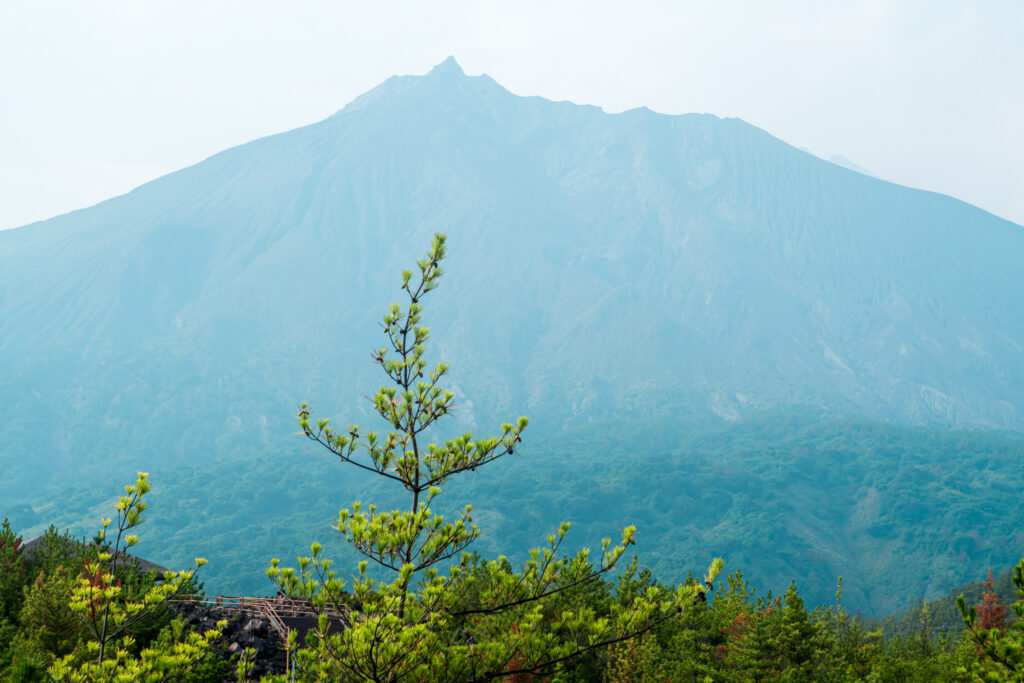
You could spend a few days exploring Kagoshima and Sakurajima. A budget-friendly accommodation in Kagoshima is Gracias. It is only a 5-minute walk from the ferry terminal to Sakurajima.
Okinawa
Made up of 160 islands, Okinawa is nicknamed the Hawaii of Japan. This prefecture holds the southernmost and westernmost areas of Japan. The beaches draw the most crowds to the islands, but Okinawa’s distinct culture is the most enchanting element. For thousands of years, the Ryukyuan people lived isolated on these islands.
Best Thing to Do: Snorkel on Furuzamami Beach

Most visitors to Okinawa fly into Naha to begin their trip to paradise. Although Naha is a bustling city with shopping streets and a historic castle, you will need to take a ferry to Okinawa’s outer islands if you want the best beach experience.
Part of the Kerama Island National Park, one of the most popular outer islands is Zamami Island. After docking at the port, many beachgoers walk 20 minutes to Furuzamami Beach. The beach is famous because of its calm waters, perfect for snorkeling. Visiting this beach should be high on your Japan bucket list.
Although the best coral reefs are not within the swimming boundaries, you will still see plenty of fish during your visit to Zamami Island. I lived in Hawaii for three years, but snorkeling here was one of my favorite snorkeling experiences ever.
How to Access
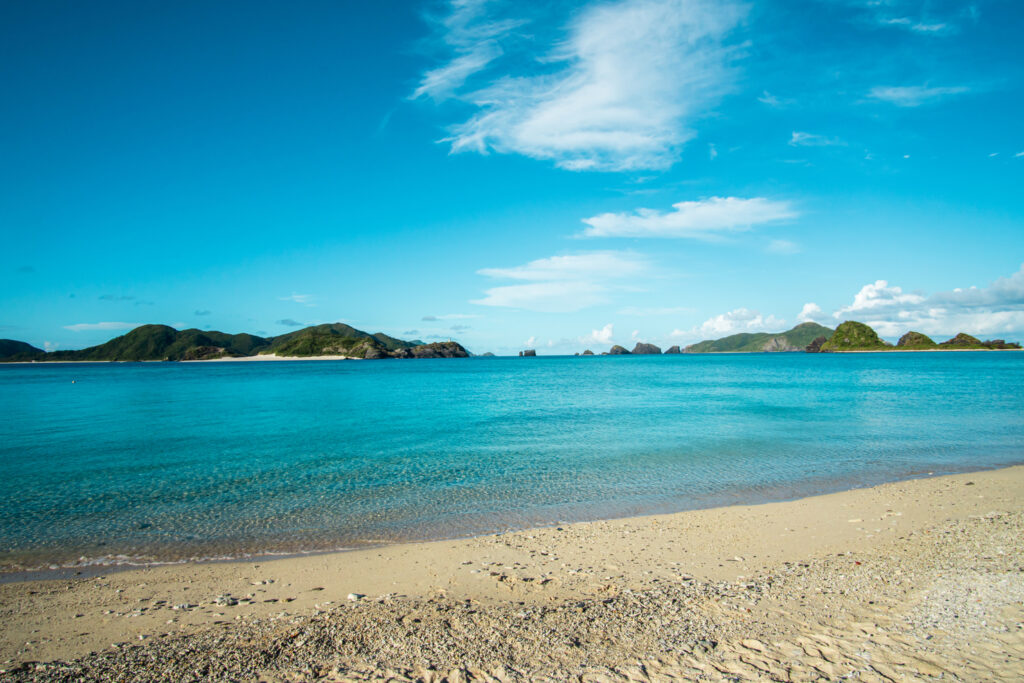
You can find cheap flights from Tokyo to Naha on a budget airline like Peach. Once in Naha, go to the Tomari ferry terminal, and you can take a ferry or high-speed boat to Zamami Island. The ferry is the cheapest way to reach Zamami, but it departs less frequently. Check the ferry timetable here.
Where to Stay

Zamami is a gorgeous island and the highlight of any trip to Okinawa. If you like camping, you can tent camp on Ama Beach for less than 2,000 yen, and the other designated beach on the island for swimming. You can also rent a cottage near the beach for 21,000 yen a night. The main appeal of Ama Beach is that sea turtles come to the waters during high tide.
Visiting Japan? Read: How to Spend 48 Hours in Tokyo With Only $100 and The five best hostels for solo travelers